The Secret of Monkey Island started a whole series of point and click adventure titles in 1990.
Original post link: The Secret of Monkey Island, created by James Woodcock.
For even more content, visit Pixel Refresh - Gaming & Tech | Retro & Modern.
The Secret of Monkey Island started a whole series of point and click adventure titles in 1990.
Original post link: The Secret of Monkey Island, created by James Woodcock.
For even more content, visit Pixel Refresh - Gaming & Tech | Retro & Modern.

It’s easy to forget about our microwave when we’re not using it—especially since many models are compact, tucked into the corners of counters, or mounted above the stove. But, like other kitchen appliances, our microwaves need basic maintenance in order to keep running smoothly.
by Nathaniel R
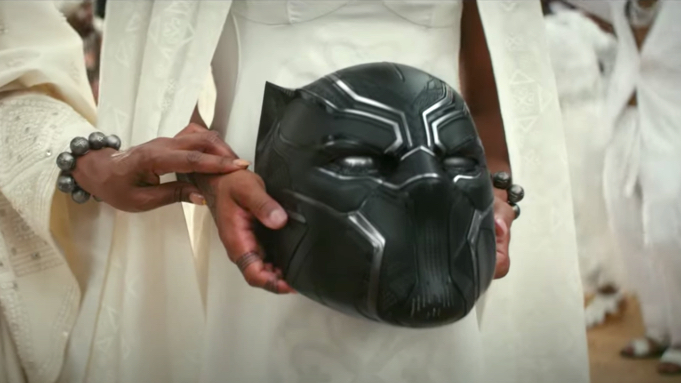
Presenting a task as impossible as hiding a futuristic country for centuries in Sub-Saharan Africa. Imagine having to follow up the phenomenon of Marvel's Black Panther (2018) which, like most explosive zeitgeist events, had ultra precise perfectly timed ingredients and arrived at the exact moment in culture when all of them would be most appreciated. Now imagine having to follow that up without its charismatic leading man, lost to cancer at the young peak of an already impressive career. Director Ryan Coogler was in an unenviable position. It's no surprise, then, that the sequel to Marvel's most popular solo adventure is a bit wobbly on arrival. Never mind that the sequel must bear the weight of all the absurd expectations and make sense of T'Challa's absence while trying to find new legs on both land AND at sea. Thank god for the latter. Whatever the movie's faults, it's not from attempting a simplistic retread...
Read more of this story at Slashdot.
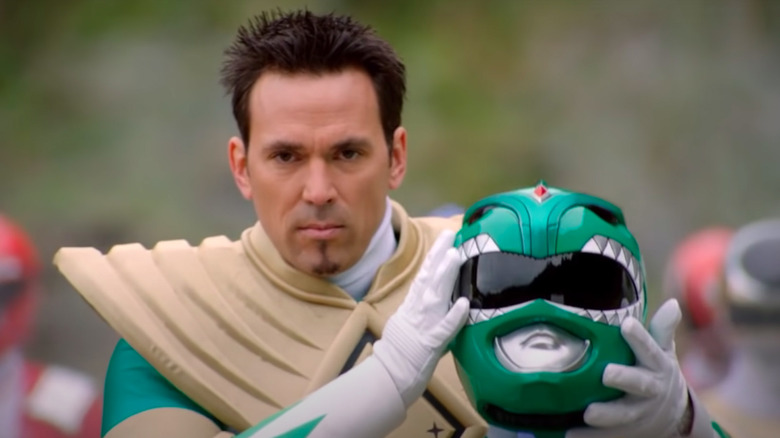
Not long after "Batman: The Animated Series" star Kevin Conroy passed away, another icon of the '90s has left us far too soon. Jason David Frank, the actor and martial artist best known for playing Tommy Oliver, the Green Ranger and White Ranger in the "Mighty Morphin Power Rangers" franchise, has passed away. Rumors began circulating on the web Sunday morning after Frank's agent and trainer posted the tragic news, and now the death has been confirmed by his manager, Justine Hunt, according to TMZ. The report also states that "sources with direct knowledge" say Frank died by suicide, though this remains unconfirmed for now.
Jason David Frank became one of the most popular heroes of the 1990s in his role as Tommy Oliver, who began his turn as the villainous Green Ranger. Eventually, the character became a hero, after turning his back on the show's villains, giving children of the '90s one of their favorite characters on television. What began as a 14-episode stint on the popular "Mighty Morphin Power Rangers" series turned into something bigger.
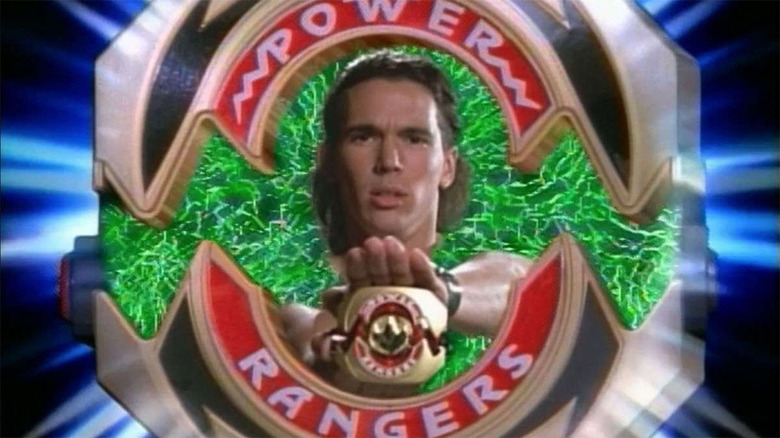
Originally, Frank was meant to depart "Power Rangers" and lead "Cybertron," another live-action sci-fi series trying to capitalize on the popularity of the Japanese import, which would eventually be retitled "VR Troopers." The actor even shot a pilot for the series. But when Tommy Oliver proved to be incredibly popular, "Power Rangers" kept Frank in the cast and turned him into the White Ranger, a new leader for the original "Mighty Morphin Power Rangers" line-up. After starring in the first "Power Rangers" movie, Frank stuck around when the "Power Rangers" became Zeo Rangers, playing the Red Zeo Ranger, as well as the Red Turbo Ranger in "Power Rangers Turbo."
Though the glory days of the Green Ranger and White Ranger had passed by the late '90s, with Frank leaving the show in 1997, he returned for an anniversary special in 2002, and he became the Black Dino Ranger in "Power Rangers Dino Thunder" in 2004. But Frank's true return to "Power Rangers" glory came when he put on the Green Ranger suit in a cameo appearance in "Power Rangers Super Megaforce" in 2014.
In addition to his work on "Power Rangers," Frank appeared on other '90s shows like "Sweet Valley High" and "Family Matters," as well as MTV's "Undressed" in 2000. In recent years, he also lent his voice to the animated productions "Transformers: Titans Return" and "We Bare Bears." But Frank's most beloved role was always as Tommy Oliver, and he was always happy to meet fans at yearly pop culture conventions.
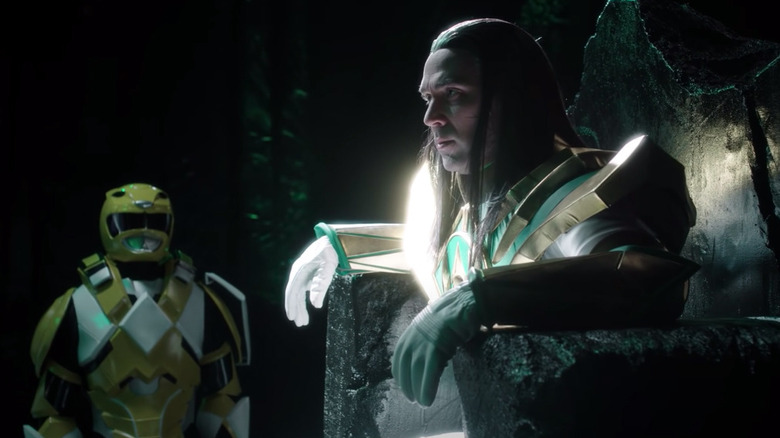
More recently, Jason David Frank reprised the role of Tommy Oliver in quite a cool fashion. A live-action trailer was created for the comic book event series "Power Rangers: Shattered Grid." In the comic series, the character of Tommy Oliver turned back into a villain known as Lord Drakkon, who hailed from an alternate reality where he reigned over a technologically-advanced, dystopian Angel Grove as an oppressive ruler with and army of his own Ranger Sentries. It's a shame we never got to see that turned into a live-action series, but the trailer was certainly a treat for longtime "Power Rangers" fans.
Frank's on-screen career may have been mostly limited to his work in the "Power Rangers" franchise, but there's a reason he kept returning to the role, and it wasn't just a paychek. Fans never lost their love for Tommy Oliver, no matter what "Power Rangers" suit he had on. Frank was an integral part of the franchise, and his role as an outcast who became a hero resonated with a lot of kids going through tough times in the '90s. Plus, he simply looked cool in the green suit with the gold shield. Was there any Zord that was better than the Dragonzord? Combine his fan favorite TV role with his discipline in martial arts, and it's clear that Jason David Frank was truly a hero to a lot of people. He will be missed.
Read this next: Actors Who Died In 2021
The post Mighty Morphin Power Rangers Star Jason David Frank Has Died at Age 49 appeared first on /Film.
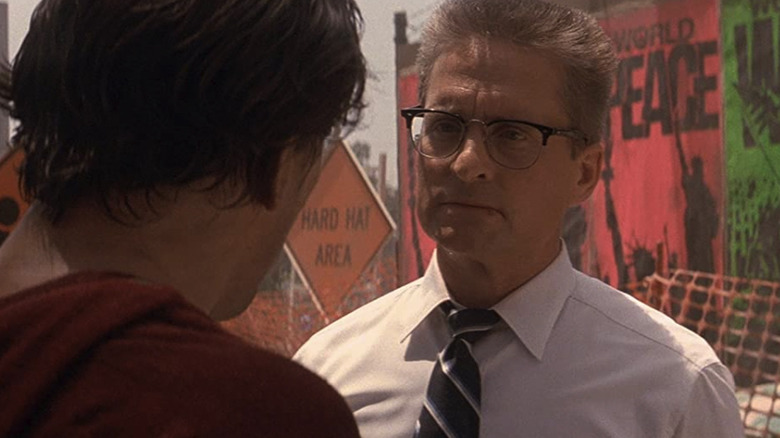
"Falling Down" is the story of a man who gets pushed over the edge. That man, played by Michael Douglas, feels alienated and impotent in his place in society, and after suffering a mental breakdown, he goes on a violent (and often racist) rampage through Los Angeles.
The movie's themes feel perhaps even more prescient today than they did when it was released, with Douglas' character serving as a sort of avatar for the "white male rage" of the Internet era, when people are more isolated than ever. People long for a world of the past, a world that makes sense to them, and when they look around and don't see that, they lash out.
Watching the film today, some people may feel that the film doesn't do quite enough to condemn the actions and worldview of Douglas' character, especially in situations like his racist tirade against a Korean convenience store owner. The director himself, Joel Schumacher, addressed these criticisms in an interview back in 1993 when the film was released, saying that while the character was meant to be relatable on some level, to make the audience feel conflicted, he isn't supposed to be emulated.
Regardless of how you feel the movie's politics have aged, Michael Douglas puts in a compelling performance as William Foster, a man who can no longer handle the mundanity and fruitlessness of his life. And according to Douglas in his own 1993 interview, a lot of his understanding of the character originated from a suggestion by the hairdresser on the movie's set.
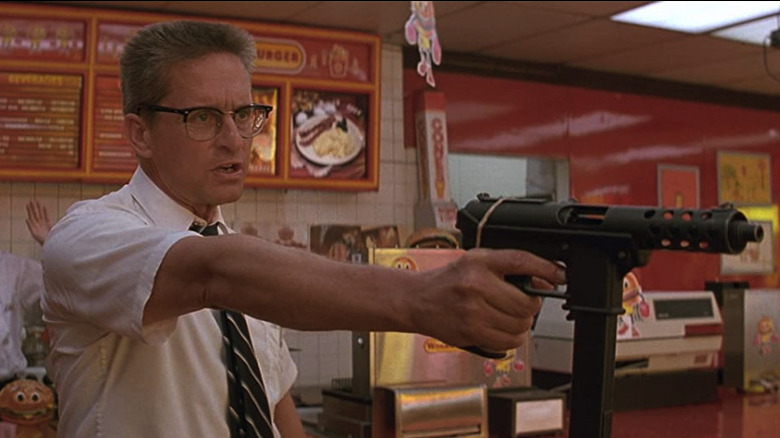
The saying "the haircut makes the man" may not ring very true in everyday life, but in movies, it's basically the law. There are countless film characters who you see fleshed out by their choices of hairstyle, whether it be Val Kilmer in "Top Gun" deciding to make Iceman's haircut as ridiculous and douchey as possible, or the extremely strange and off-putting haircut of the cold-hearted killer Anton Chigurh in "No Country for Old Men."
The William Foster character in "Falling Down" is no exception. Going into filming, they had most of Foster's appearance down. He'd wear tight, repressive clothing, wear glasses, and carry a briefcase. But they didn't know what they were doing with his hair until the hairdresser on set made a suggestion, which, as Douglas explained, really finally gave him a sense of the character:
"It's amazing sometimes how the haircut can make the man, and the haircut came and all of a sudden the whole character came together. I had a sense of somebody of this military background, maybe he'd been in the service at one time. Somebody who worked in the defense industry ... I also had a sense for the guy, that he gave me a feeling of like the late 50's and the early 60's, and somehow my character, you kind of had the feeling that he came from another time, or he wished for another time when things made sense. When somebody's job was worthwhile [and] you had a purpose in life."
Things like hair and wardrobe and makeup can sometimes be overlooked in filmmaking, but examples like this show how those aesthetic choices play an important part in the symphony that is a film. No contribution is too small, and when someone like Michael Douglas takes suggestions from the hairdresser, fascinating things can happen.
Read this next: The 20 Best Dystopian Movies Of All Time
The post Michael Douglas' Character In Falling Down All Came From The Hair appeared first on /Film.
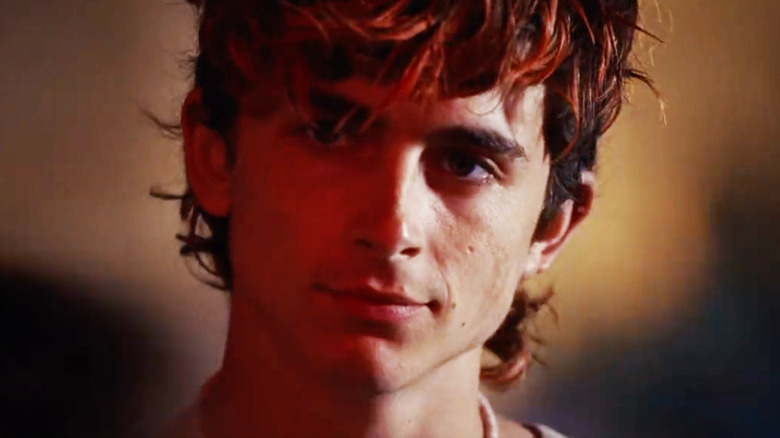
It's been a while since Hollywood's star factory cranked out a genuine, organic sensation quite like Timothée Chalamet. He's the rare marquee name who can command attention off the screen with his vivacious personality as well as hold it on-screen with his acting talents. It's possible to point to previous celebrities and thespians he recalls, but what's most remarkable about the rise of Timothée Chalamet is that he feels like something entirely new and unexpected to behold. He's at the forefront of a new generation of leading men who are out to deconstruct and demolish traditional ideas of what on-screen masculinity can and should be.
In under a decade since his big-screen debut, he's already forged a formidable path through the industry that is breaking new ground for those to follow behind him. Though he charged onto the scene for most with 2017's "Call Me by Your Name," the role for which he received an Oscar nomination, Chalamet had already worked with established names like Jason Reitman and Christopher Nolan — not to mention turned in an attention-grabbing performance in "Miss Stevens."
Since rising to the vanguard of young Hollywood, he's opened a huge tentpole in "Dune," joined an inestimable Wes Anderson ensemble, collaborated closely with Greta Gerwig on her first two features, and become something of a muse for Luca Guadagnino. One senses, too, that the best is still yet to come. On the occasion of Chalamet's latest big-screen turn in "Bones and All," we take a look at a dozen of his most memorable movie roles.
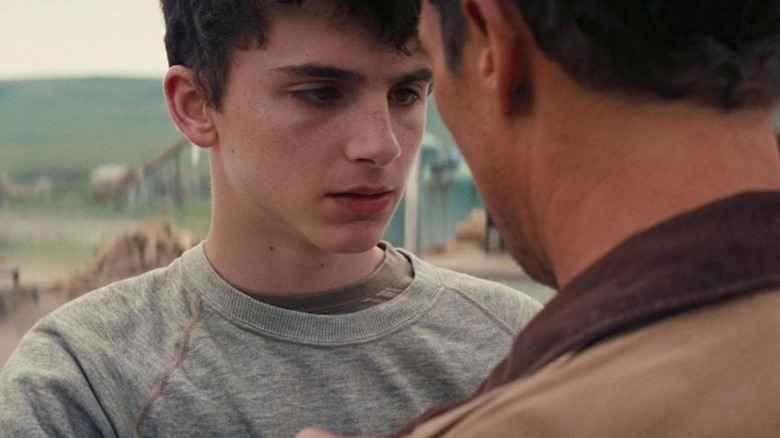
Perhaps you didn't clock it at the time, but yes, that's a pre-fame Timothée Chalamet in Christopher Nolan's "Interstellar." While he's not the main child that Matthew McConaughey's Cooper pines for across dimensions and the universe, his 15-year-old Tom is still a crucial part of the fabric of the film. There's more to the performance than just seeing the actor before he became self-conscious of his own star image. As the younger version of a character who will later come to be played in the film by Casey Affleck, he has a somewhat tricky task of feeling at home in his own skin while also laying the groundwork for the acclaimed actor to come in and inherit the character. It never feels in doubt that there's a straight line between Chalamet and Affleck, with the teen actor's mercurial moodiness calcifying into the adult's embittered pessimism.
Nolan often gets a bad and inaccurate reputation for making films that are cold and unemotional. "Interstellar" feels like the most direct rebuttal of this common line of criticism, and not only because the video of McConaughey's prolonged crying has become something of a meme. A journey to the end of the world to save the world has the paradoxical effect of driving Cooper deeper into himself to discover the forces that transcend meaning and understanding. "Love powers the universe" sounds like the kind of corny conclusion that could double as parody, but Nolan's epic space odyssey earns it and more.
Casting performers like Chalamet who play into this naked, vulnerable emotionality help lay the groundwork for this heartfelt conclusion. Even though it gets a bad reputation as one of the lesser Nolan works, it's still a riveting watch. It also deserves inclusion in any survey of Chalamet's career, albeit as somewhat of a footnote given his limited participation.
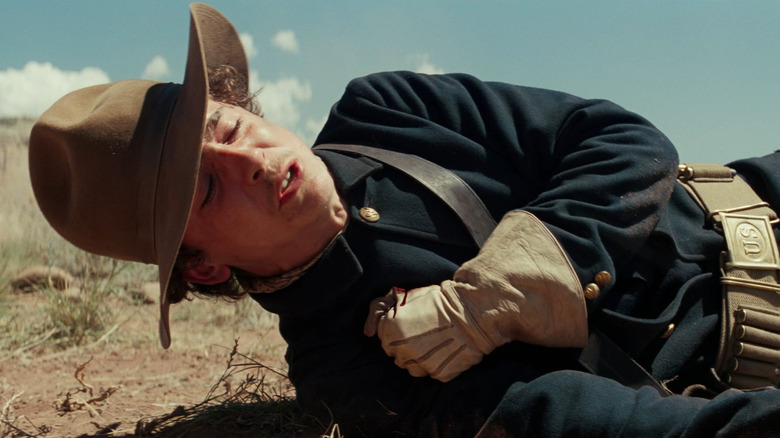
Timothée Chalamet has but a brief role in Scott Cooper's "Hostiles," a 2017 Western film that far too few saw thanks to its odd distribution by Byron Allen's fledgling unit Entertainment Studios. Chalamet plays a supporting role as Pvt. Philippe DeJardin, trading nicely on his French descent. In 1892, he's part of a group of soldiers tasked with transit for Cheyenne war chief Yellow Hawk (Wes Studi) from New Mexico back to his tribal lands in Montana. DeJardin's youth plays a large role in what little we see of his character, but Chalamet makes the most of his scenes. He plays up the put-on toughness of DeJardin, so it's clear how he comes across to the rest of the army detail: a boy amongst men.
The film cannot rank particularly high in Chalamet's filmography because he's simply in it so seldom. But if tempted to turn off the film after Chalamet's early exit, stick around because "Hostiles" has a lot to offer even without his presence. Every Christian Bale performance is at least somewhat interesting, and he's doing some sturdy work here as Capt. Joseph Blocker, a weary soldier who resists his final assignment until threatened with a court martial. Cooper avoids the lazy tropes of transforming a grizzled bigot by virtue of compassionate exposure to a group he dislikes, weaving a more complicated moral and physical journey for Blocker and the characters. The film also features a standout performance by Rosamund Pike, who loses her family in an attack by Comanches and must navigate her way through the trauma alongside the detail once they find her on their quest.
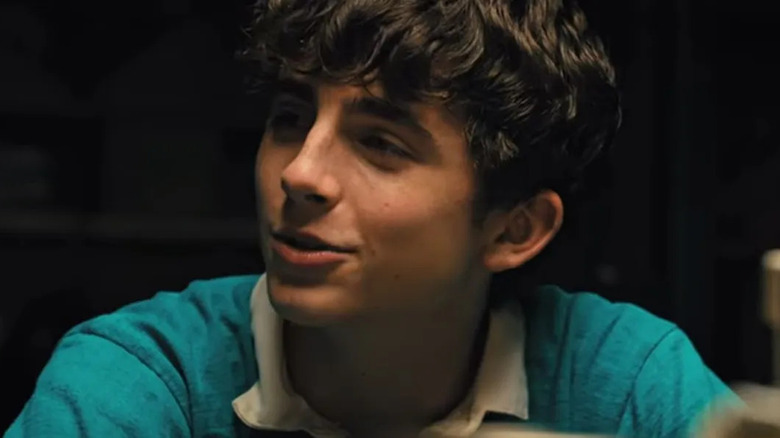
Even Timothée Chalamet's most classic matinee idol movie is not so straightforward. Shot before the sudden "Call Me by Your Name"-mania but released into it, "Hot Summer Nights" features the actor in a last bit of self-containment as Daniel, a bookish teenager who finds his coming-of-age story through dealing drugs. It starts off simply, as these things often do, by simply hiding a friend's weed to avoid detection by the cops. But once he gets a peek into the underground world, Daniel sees something somewhat unexpected: an opportunity for windfalls of profit. He spots the opportunities for distribution innovation and process improvement, juicing his customers for every penny their worth alongside rebellious bud Hunter (Alex Roe). His clientele has plenty to spare, too, given the film's setting amongst the rich kids in 1991 Cape Cod.
Elijah Bynum's directorial debut has slickness and style to spare as it pulls the audience into Daniel's world while it grows in promise and peril alike. He gains the level of notoriety in a new place that he so desperately craves as a slightly shy guy, and catches the eye of Maika Monroe's beguiling McKayla. But the more he gains in stature, the more his exploits catch the attention of his suppliers, who want in on the cut as Daniel looks to expand his preppy pot empire into cocaine. Through it all, Chalamet projects a cool that is knowingly effortful, which allows anyone to project their own adolescent insecurities onto the character. It's all the more impactful because he lets us see the performance within the performance. "Hot Summer Nights" is nothing groundbreaking (it certainly feels like a first feature) but makes for a fun hour and change to spend with an electric Chalamet.
If you or anyone you know needs help with addiction issues, help is available. Visit the Substance Abuse and Mental Health Services Administration website or contact SAMHSA's National Helpline at 1-800-662-HELP (4357).
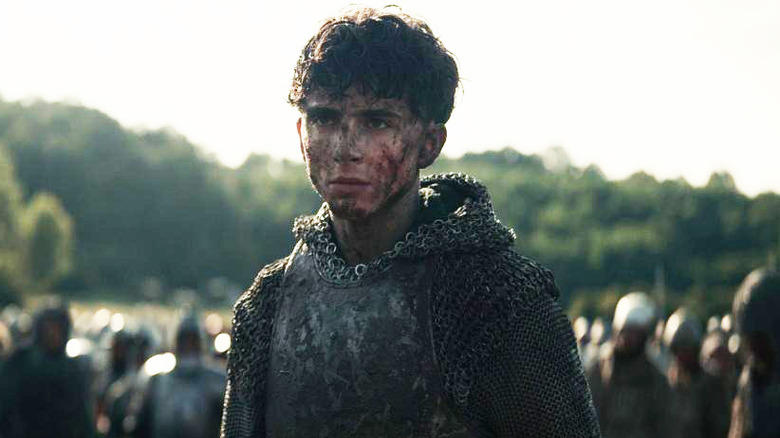
2019's "The King" was Timothée Chalamet's first film that belonged to him and him alone. Save for Robert Pattinson's brief but uproarious turn as the Dauphin of France, campy accent work and all, he commands the frame from start to finish. It's not hard to see what attracted Chalamet to take the role as his star blew up in the industry — the story of his character Hal echoes his own evolution from a teen to a man.
Don't let the modest name fool you. Hal is the pet name for the boy who would soon become England's King Henry V during the Middle Ages. He begins "The King" as a lad of modest aims and intentions entirely uninterested in assuming the throne. But after the death of his father and brother, he's forced with no choice but to take the crown.
What follows is nothing of the grandiloquent sort of drama you might expect of the Shakespearean plays from which David Michôd and Joel Edgerton adapt the film. This is a gritty, grounded tale that's more interested in Hal's mumblings as he struggles to articulate his authority both to others and himself, perhaps to the film's ultimate detriment. This gray, grimy war flick is as murky as the mud on which Hal must fight for his country. Chalamet disappears inside the twisted, tortured psychology of his character in "The King." It's an unusually muted performance from the normally extroverted and physical performer, but the turn works because he commits to the brooding.
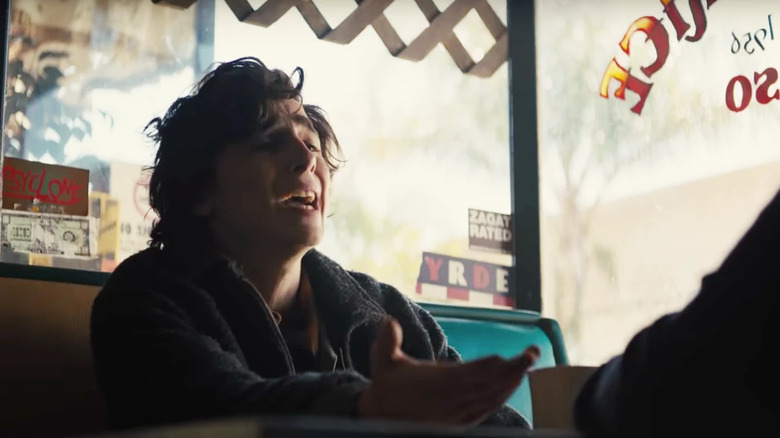
There's a particular trap for young actors to do movies about addiction. As a literal challenge, it allows them to demonstrate the extent of their limber and adaptable physicality as they portray someone in the thrall of a controlling substance. As a metaphorical challenge, it's a convenient plot device through which to play out larger meta-narratives about indulging in the temptations of youthful indiscretion. So perhaps it's no surprise that Timothée Chalamet gravitated toward "Beautiful Boy," playing the real-life recovering meth addict Nic Sheff.
Chalamet is a raw nerve and live wire in the film, a bundle of tics and anxieties splayed out on the screen as he torturously plunges into the depths of addiction. If he's a tad overwrought, it's only because the movie itself is. Chalamet feels entirely combustible, like at any given moment in "Beautiful Boy" Nic might simply explode before our eyes. Through his lithe, lanky physicality and his weepy, woebegone emotionality, Chalamet helps us understand what it really means to be an addict. This is a necessary component for the larger aim of Felix van Groeningen's film, which is to explore the very nature of addiction itself.
Nic is but a supporting character in "Beautiful Boy" with an outsized impact on the story compared to his screen time. The film documents the wider ripple effects within the Sheff family, particularly on the wounded soul of his heartbroken father David (Steve Carell). Though Nic's behavior tests the limits of their compassion, David's quest for solutions and salvation for his son is the ultimate testament to the power of a father's love. Their bond is all the more moving because Chalamet never leaves a bit of doubt as to just how much Nic needs that compassionate care.
If you or anyone you know needs help with addiction issues, help is available. Visit the Substance Abuse and Mental Health Services Administration website or contact SAMHSA's National Helpline at 1-800-662-HELP (4357).
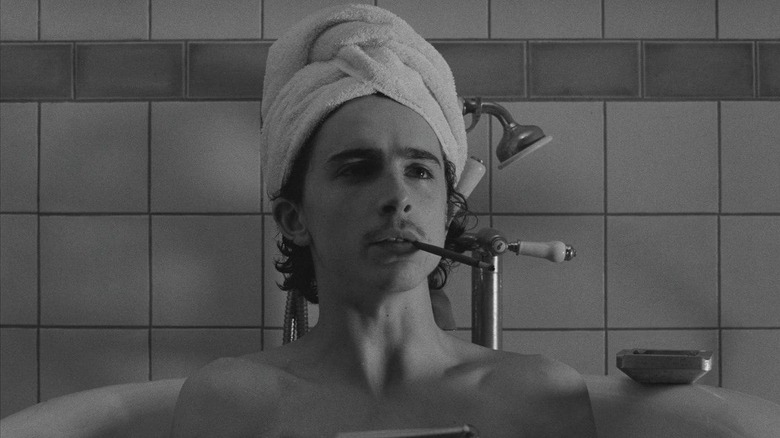
Timothée Chalamet has primarily followed the Leonardo DiCaprio trajectory to avoid being pigeonholed as a teen idol. That is to say, he's tread an almost exclusively solemn and serious path in the five years after breaking out. But no one can resist taking a role in a Wes Anderson movie, now can they? Chalamet showed some serious comedic chops leading one of the vignettes within "The French Dispatch" (and held his own as scene and romantic partner Frances McDormand, to boot). Should he ever want to go all-in on doing lighter fare, he could easily shift genres.
Anderson wisely leans on someone with Chalamet's pre-existing iconography to play Zeffirelli, the student leader of a French student revolution in the model of the May '68 protests. He's possessed with the kind of contagious zeal that defies logic or explanation; it simply must be felt. Chalamet instantly lights up the screen with his charismatic energy, a remarkable feat given the gnarly pencil-thin trash 'stache adorning his upper lip. He's deft with the delivery of Anderson's droll dialogue and committed to the off-beat sexual energy he shares with McDormand's Lucinda Krementz, a reporter from the titular newspaper assigned to report on his would-be revolution.
Chalamet avoids the worst tendencies of actors in a Wes Anderson film, who often resort to a rote recitation of the lines with a pronounced affection that renders them into cinematic paper dolls. His Zeffirelli is flesh and blood, at turns smug and sincere. It's too bad there's not a whole movie about this character rather than just one chapter of him.
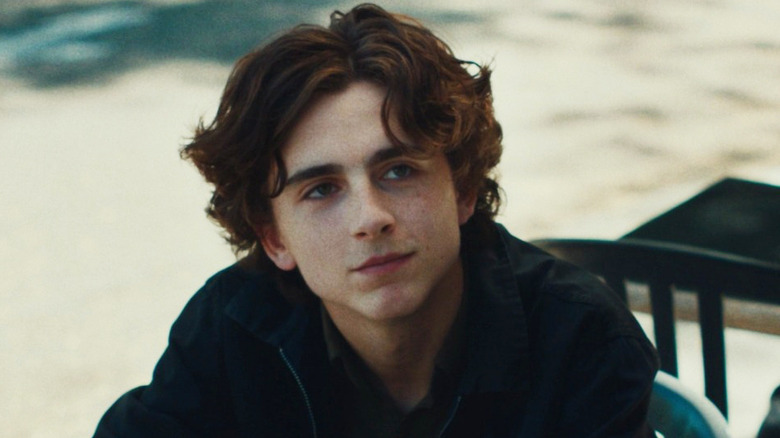
In most people's adolescence, there's a character like Timothée Chalamet's Kyle Scheible from "Lady Bird." He's a rebel who thinks he has a cause after reading a few pages of Howard Zinn, strutting about projecting an invulnerable sense of removal from the world. That unbothered cool can prove alluring, as it does to Saoirse Ronan's Christine "Lady Bird" MacPherson, but such an affect masks the pretentiousness and callousness to his self-involvement.
Kyle doesn't really enter the picture in "Lady Bird" until the protagonist has already tried on a new identity or two as she seeks to escape from what she views as her humdrum Sacramento existence. He serves an important purpose in the narrative, illustrating the draw of winning an elusive love interest and the disillusionment of actually pinning one down and dealing with all of them as a person rather than a concept. Chalamet oozes the smarm and charm of the "bad boy" archetype, nailing Kyle in everything from the chilly demeanor to his soft-spoken faux-philosophical dialogue.
"Lady Bird" draws heavily from Greta Gerwig's own adolescent experiences, and it speaks to her tremendous grace and wisdom that she does not turn the character of Kyle into a mere caricature. He's more than just an instructional lesson for Lady Bird to have a sense of self-worth, and Chalamet helps anchor Kyle in the hidden pain of watching a family member slip away to cancer. Just like everyone in the film, he's struggling to expand his point of view beyond one where he's the main character. This may be the best overall movie Chalamet has ever done, although he's far from the main reason it's a coming-of-age classic.
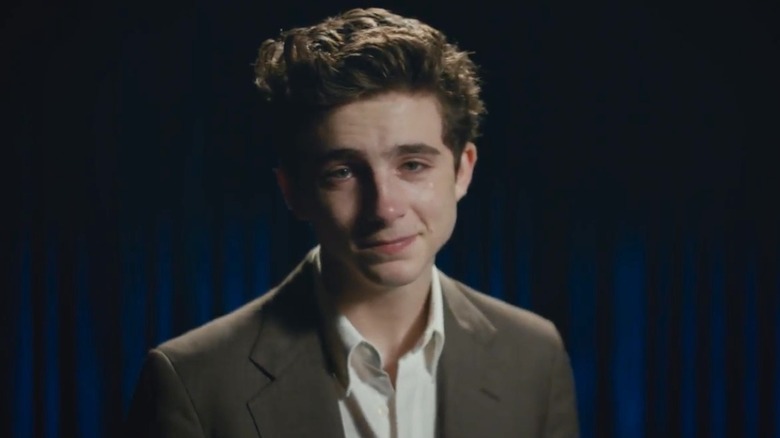
If actors were commodities purchasable on a stock market, anyone who bought into Timothée Chalamet after seeing "Miss Stevens" would be filthy rich now. This is the real breakthrough performance for the actor. It's the first real showcase of his full talents from impulsive physicality to tender vulnerability. Like many a Chalamet performance, there's an exquisite tension between the character's lack of certainty and the performer's undeniable confidence in portraying such confusion.
Chalamet gives a preternaturally assured turn in Julia Hart's film as misunderstood teen Billy Mitman. He's a troubled but talented student who finds expression for his angst through art; specifically, drama. At his school, however, that program's funding is so on ice that Lily Rabe's titular English teacher must accompany a group of three students to their monologue competition. Billy and Miss Stevens, still coming of age herself at 29, strike up an odd companionship as each navigates their own hang-ups and doubts in the open. She sees past the fears of his peers, who view his temperamental relationship with newly prescribed behavioral medications as reason to regard him as some kind of ticking time bomb.
It's to the great credit of director Julia Hart, who co-wrote the script with husband and producer Jordan Horowitz, that they simply lean back to let Chalamet and Rabe make magic. She's fond of the loose, Richard Linklater-style "walk-and-talk" where the camera hangs back to observe a casual conversation between characters. The film does not force Chalamet to shove Billy into some kind of easily recognizable box nor map his relationship with Miss Stevens into a familiar formulation. It's just humanity in all its messy majesty, laid out before us with authenticity and accuracy.
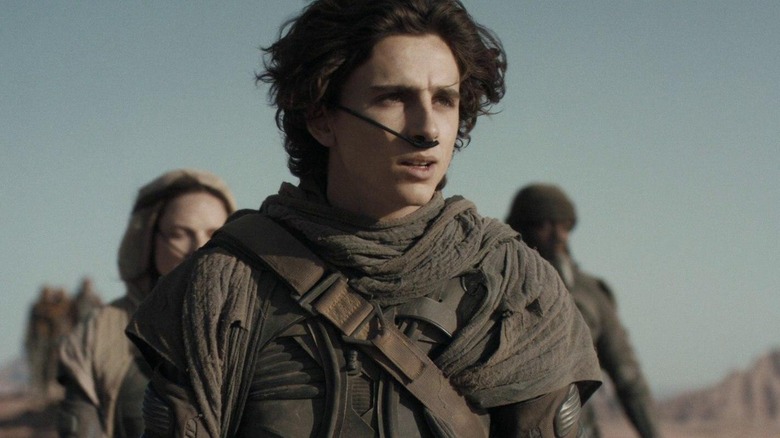
It's easy to get swept up in the sight, sound, and spectacle of Denis Villeneuve's epic space opera "Dune." But the film would be absolutely nothing without the quiet strength it draws from Timothée Chalamet's performance as protagonist Paul Atreides. This is very much an archetypal monomyth, a hero's journey that would do writer Joseph Campbell proud, yet Chalamet roots the character in deep, complex characterization. Anchoring a movie like this is a major accomplishment in its own right, but there's real emotional stakes to this character's success and failure that the actor layers in flawlessly among the film's other technical elements.
Chalamet intrinsically understands that it's difficult for the average viewer to connect with Paul as a messianic figure, so he plays up the humanity first and foremost. Within the film's science-fiction future, this son of a duke comes to learn he might have the breeding and the power to become the fabled Kwisatz Haderach. The ground around him shifts as people come to realize he might be their hope for deliverance through dire geopolitical straits. Chalamet shows the weight of this responsibility as reality sets in for Paul, choosing to pierce his armor of stoicism with brief bouts of self-doubt that prove revealing and relatable for the character.
There's a tendency for leading men to just smolder their way through a tough guy role like this, but Chalamet elevates "Dune" by bringing his trademark emotional directness to the character. He's a performer changing the way a generation approaches their construction of masculinity because he does not downplay feelings of weakness — he deals with them openly.
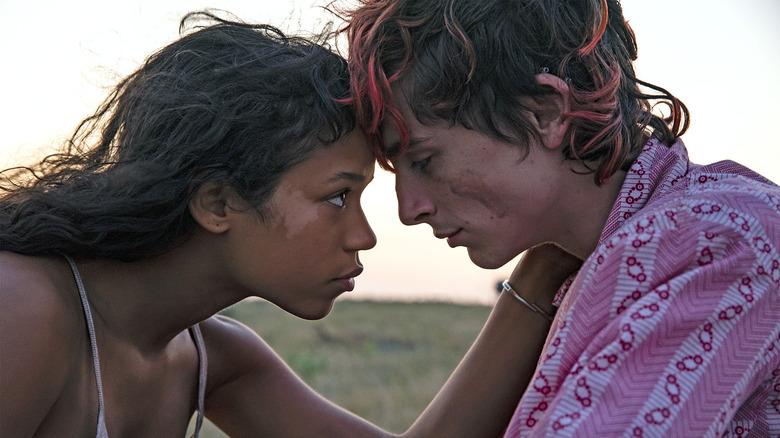
In Luca Guadagnino's "Bones and All," Timothée Chalamet delivers the type of performance that's clearly the result of a collaboration between an actor and a director who knows them well enough to push them out of their comfort zone. In many ways, the itinerant cannibal Lee shares much in common with his sentimental and sensuous turn as Elio from "Call Me by Your Name." Both young men seek love and connection in a world where they do not feel they can be accepted as themselves.
But Guadagnino goes a step further here, asking Chalamet to start by playing the character as confident only to have those defenses slowly chipped away as he falls for fellow flesh-eater Maren (Taylor Russell). When Lee first struts across the screen in "Bones and All," he exudes an unflappable cool that cannot help but lure people into his orbit. He knows the pull he has on other people, too, and justifies weaponizing it to draw in the people he desires to devour. His roguish charms are his strength, a potent defense mechanism against a world that has no place for his kind. They're also his weakness, as they preclude him from experiencing intimacy even with someone who might understand his struggles.
Ultimately, Guadagnino is far less interested in the blood going down Lee and Maren's gullets and far more captivated by the blood rushing into their hearts. Their love on the run is fast, frenzied, and utterly infatuating because Chalamet — alongside Russell — methodically strips back all his character's posturing and performativity until we see the scars on his very spirit.
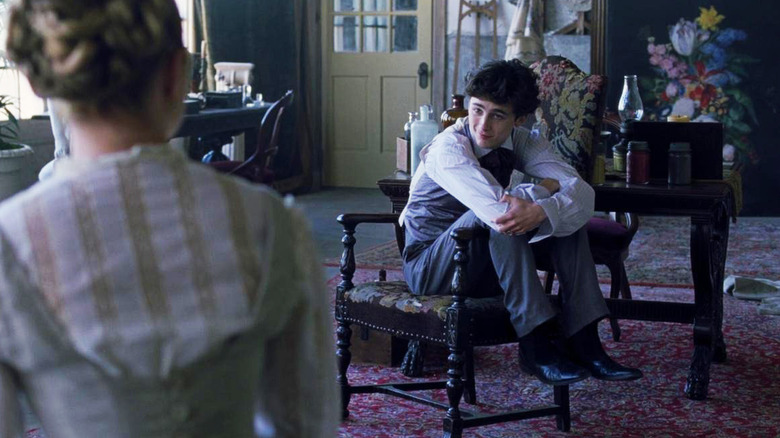
After working with Timothée Chalamet in 2017, Greta Gerwig observed that the actor was "a young Christian Bale crossed with a young Daniel Day-Lewis with a sprinkle of young Leonardo DiCaprio." She perfected this hybridization in their next collaboration on 2019's "Little Women," and not only because his role as Laurie was once played by Christian Bale himself. Gerwig sees the danger and the daring in his persona that captivates audiences, but she also knows there's a sweetness underlining it all that makes them swoon.
In the world of "Little Women," the character of Theodore "Laurie" Laurence can often represent something as a prize put on a pedestal for the March sisters to fight for, specifically the headstrong Jo (Saoirse Ronan) and her impetuous younger sister Amy (Florence Pugh). But Gerwig's adaptation, which oftentimes feels like a graduate-level seminar deconstructing Louisa May Alcott's novel, finally unlocks Laurie as a character in his own right. He's not some gullible gent willing to entertain any sister like a lousy lothario. He's a boy craving the love of a big family, which he sees abounding within the March house but lacking in his own. Chalamet's Laurie desperately craves acceptance into their home, and the actor isn't afraid to show the depths of his desperation to gain the March's approval.
Gerwig understands Chalamet's unique appeal across gender lines at the very moment that those distinctions are blurring in the real world. He doesn't want to court a March sister so much as he wants to become one of them. Underneath the swagger is the sincerity of a puppy dog who just wants to give and receive love. Chalamet does not shy away from the more feminine coded aspects of the character, such as Laurie's maudlin emotionality, as he creates the definitive cinematic Laurie.
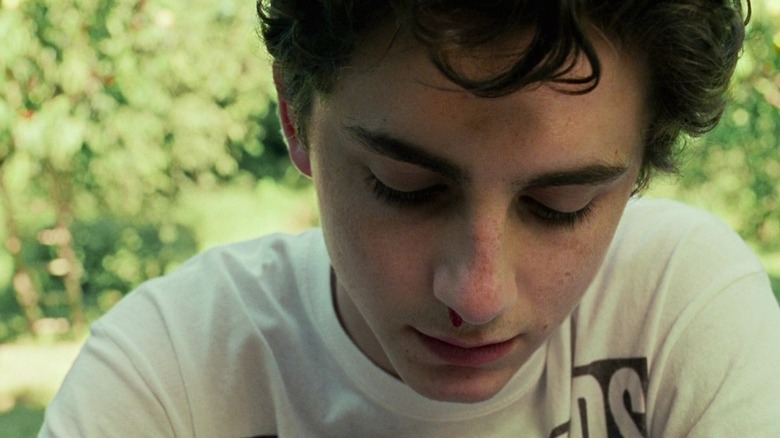
The performance that made Timothée Chalamet the youngest Best Actor nominee in 80 years still retains all its power. As Elio in "Call Me by Your Name," Chalamet delivers a masterclass in coming-of-age before the camera. His jaded teenager gets jolted out of his aloof apathy by the arrival of the American student Oliver (Armie Hammer) to study with his father (Michael Stuhlbarg) at their villa in Italy. The two feel a quick kindling of attraction that neither is quite ready to act upon, especially because both are performing the heteronormative masculinity of their '80s-era setting. And Elio, for all his wiles and wits, maintains all the insecurities and immaturities of an inexperienced teenage boy.
Chalamet stays attuned to the physical impulses of Elio to a frightening degree, abandoning studied mannerisms in his approach to the character and letting all his contradictory impulses run free. It's a case study of the confusions of adolescence, where one's body acts in ways the mind cannot understand and must catch up with.
With great sincerity and sensuality alike, director Luca Guadagnino surveys this burgeoning summer romance in "Call Me by Your Name." He captures the beauty and the tragedy of two people who fumble their way towards an expression of the desire and affection they feel for one another yet cannot figure out how to sustain it outside the throes of one passionate season. Chalamet's soul and self are entirely out in the open in the film, with his heart beating out of his chest as it's made and broken before our eyes. As Elio experiences all the emotions of first love as a character, so does the audience experience that first bit of identification and affection for Chalamet as a performer.
Read this next: The 19 Greatest Movie Couples Of All Time Ranked
The post The 12 Best Timothée Chalamet Movies, Ranked appeared first on /Film.
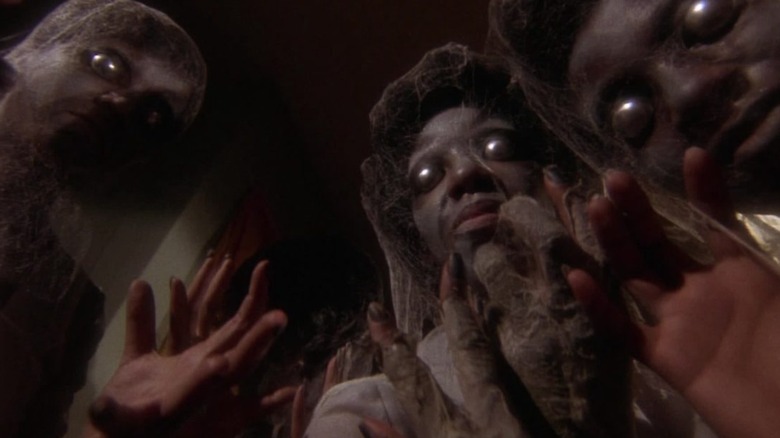
Zombies have a long history in film, and just like the rest of the horror genre, the evolution of the zombie movie is a topographical study of political and sociological change. From the early appearance of zombies as anti-war symbols in 1919's "J'accuse!" through the Vodou zombies of 1932's "White Zombie," and from the shambling flesh-eaters of George A. Romero's seminal 1968 film "Night of the Living Dead" through the fast-moving rage zombies of Danny Boyle's 2002 epidemiological horror "28 Days Later," zombie movies are a constant but ever-changing staple of cinema.
While those classics of the subgenre make for excellent year-round horror viewing, there are so many underrated and/or underseen zombie movies that deserve your attention. This list highlights 15 of those films: stories about the undead that breathe new life into horror and raise new questions about politics, culture, and art, all while making you scared to walk past a cemetery.
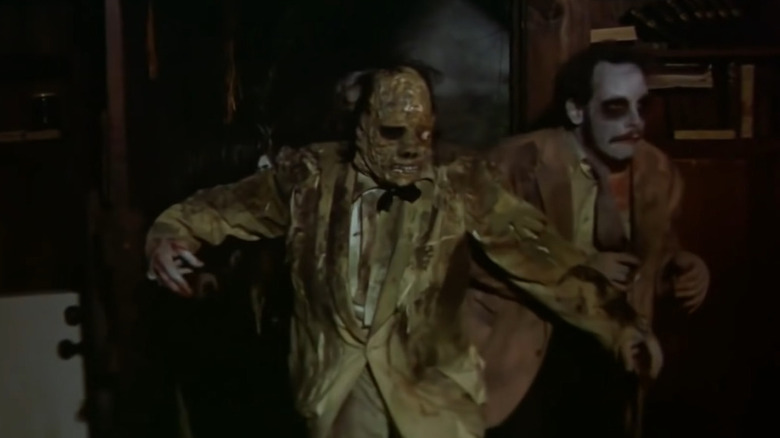
"What a perfect place for a mass murder!" Alan (portrayed by co-writer Alan Ormsby) is the director of a theatre troupe who decides to bring his cast and crew to an island cemetery for a night of jokes, witchcraft, and necromancy. Predictably, playing pranks in a graveyard and trying to raise the dead don't go well, and they find themselves besieged by real zombies after Alan's fake spell actually works. Filled with wry, morbid humor and a terrifying finale, "Children Shouldn't Play with Dead Things" proves that theatre kids are the real villains.
Many elements of the film come back in later zombie cinema. At one point, Alan abandons his actress Anya (Anya Ormsby, Alan's real-life wife at the time) to be eaten by zombies in a scene that bears more than a passing resemblance to the opening sequence of "28 Weeks Later." The film ends (spoiler alert!) with the zombies getting on boats to get to the mainland, recalling the finale of Lucio Fulci's "Zombie." The ending is horrific, with the undead rushing the camera in an uncomfortably visceral recreation of a zombie attack. With the film's sardonic humor, this odd horror-comedy makes for a fascinating watch.
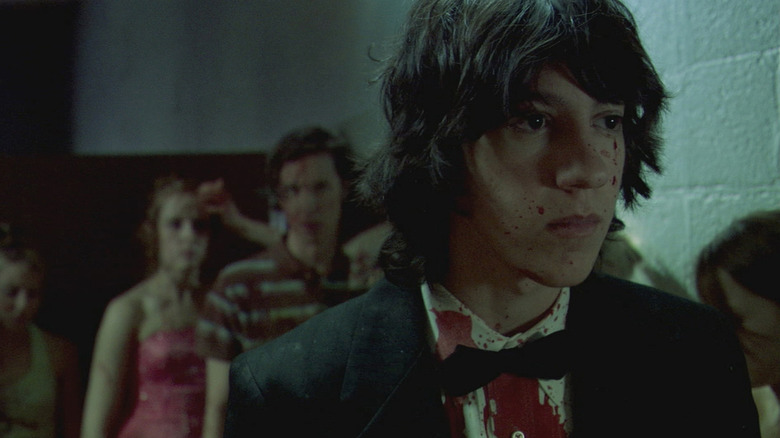
When corpses start returning to life in the graveyard next to a nuclear power plant, a group of misfit teens band together to save their high school prom. Director Gregg Bishop and writer Joe Ballarini take more than a few cues from "Return of the Living Dead" for their charming low-budget horror comedy. The punk band providing the soundtrack, the unlikely group of teens running from zombies, and the nuclear runoff (or military waste as in writer-director Dan O'Bannon's 1985 film) that creates ravenous hordes of zombies — these elements combine with a goofy sense of humor and a delightfully earnest approach to make a must-see zombie movie.
Though "Dance of the Dead" sets itself apart with its low-budget ingenuity and offbeat humor, it still has quite a few nods to earlier horror films: the aforementioned tips of the hat to "Return of the Living Dead," along with a jump scare straight out of "The Descent," a death scene similar to an iconic kill from "Day of the Dead," and the cathartic demise of an overly aggressive teen boy à la 1988's "The Blob." These references don't diminish the film's uniqueness, though. Rather, they bolster its regional charms. This is a movie that loves horror, and the cast of young, relative unknowns gives it a verve that is often missing from established studio films. Hilarious, sweet, and featuring a palpable joy for filmmaking, "Dance of the Dead" is a light-hearted zombie crowd-pleaser.
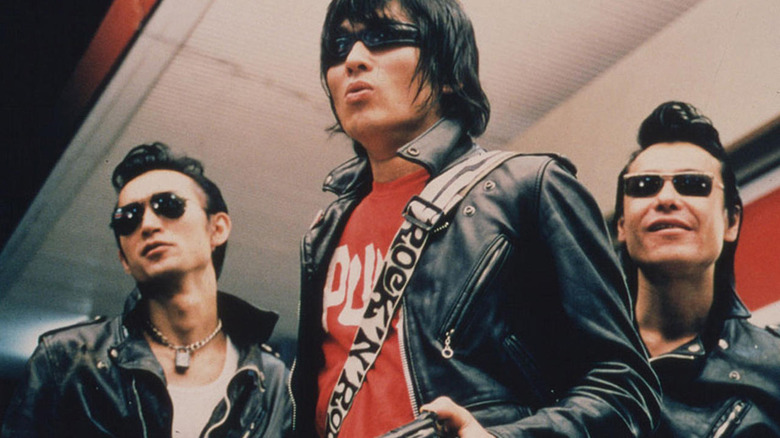
Part '50s creature feature, part "Return of the Living Dead" homage, director Tetsuro Takeuchi and writer Satoshi Takagi's "Wild Zero" is the least predictable and most progressive film on this list. Anarchic and gloriously silly, "Wild Zero" has all the ingredients for a perfect midnight movie: hilariously cartoony gags; fist-pumping, "can you believe that just happened?" moments; and rock 'n' roll blood brothers fighting the undead.
Ace (Masashi Endō) is a huge Guitar Wolf fan, and when he helps the band during a skirmish, the guitarist (also named Guitar Wolf) makes him a blood brother. Ace meets a young woman named Tobio (Kwancharu Shitichai), and when they are attacked by zombies, Ace calls Guitar Wolf for help. Meanwhile, the band's vengeful former manager, The Captain (Makoto Inamiya), is hunting them down. He's fond of pageboy wigs, impossibly short shorts, and over-the-top violence. Between his wild performance and his equally wild wardrobe, he serves as a sentient visual gag.
There's sweetness at the core of all the humor. Ace and Guitar Wolf's blood bond is a sincere reminder of the healing power of rock 'n' roll, and Ace and Tobio's love story has its beautiful slogan. Tobio is trans, and as Guitar Wolf reminds Ace, "Love has no borders, nationalities, or genders!" That "Wild Zero" has a trans love interest who is treated with respect and sensitivity puts it head and shoulders among quite a few films as does its zany, punk rock zombie story.
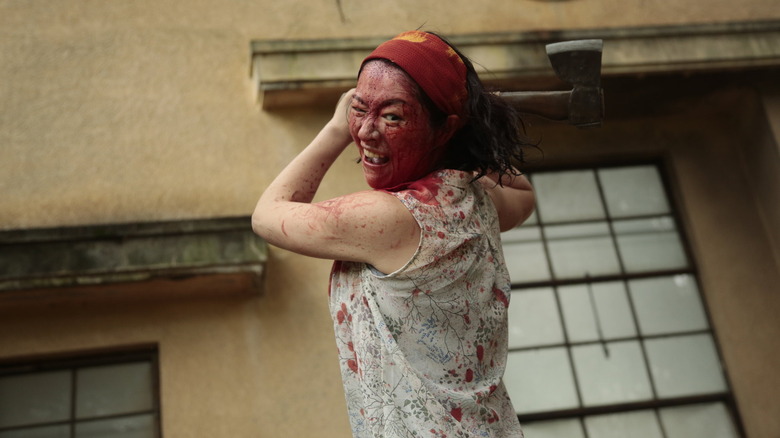
Not only is writer-director Shin'ichirô Ueda's "One Cut of the Dead" one of the best zombie movies in recent memory. It's also a brilliant movie about movies. It's best to go in knowing as little as possible about this indie horror comedy, but the premise is that a small filmmaking crew makes a zombie movie at a site once used for military experiments involving the reanimation of corpses. The fake zombies become real zombies, and the cast and crew must fight off the bloodthirsty undead. Wildly original and utterly surprising, "One Cut of the Dead" belongs on any list of the best zombie movies.
"One Cut of the Dead" was so well-received that a French-language remake premiered at Cannes in 2022 (though /Film's verdict was, "Just go watch the original"). If it was so highly regarded, why is it on a list of underrated zombie movies? One of the criteria for this list is that a movie is underseen. It can be praised by everyone who watches it, but if enough people still haven't seen it — even if it's been remade by a studio at a much higher budget — then it qualifies for this list. While the film broke box office records relative to its budget, it still hasn't reached as wide an audience as it deserves. Inventive, hilarious, and completely in love with the art of making movies, "One Cut of the Dead" is a zombie movie that everyone needs to see.
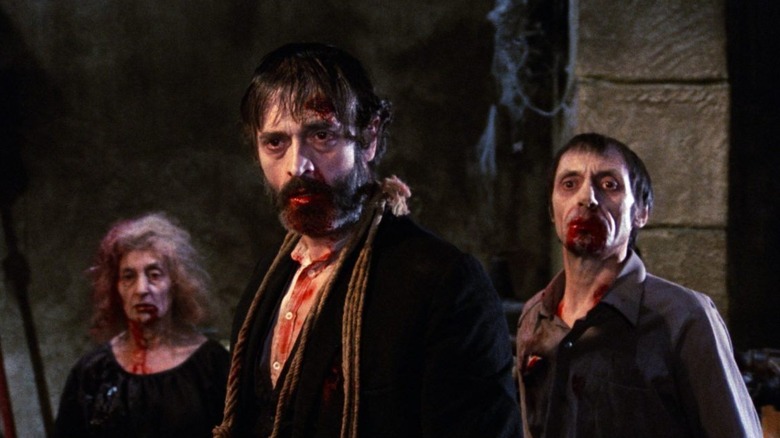
Director Jorge Grau's eerie ecological zombie movie is moody '70s Euro-horror that feels as prescient as all the best zombie films. A small English village starts using radiation as a form of pest control. That radiation makes its way to the Manchester Morgue, and the corpses start coming back to life. Many post-Romero zombie films follow the same basic formula: humans interfere with nature — whether by nuclear power, radiation, or biological experimentation — and disaster ensues. But "The Living Dead at the Manchester Morgue" stands out from the crowd due to its unnerving score and sound design, its terrifying zombies, and the sheer number of subplots that feel ahead of their time.
The focus on environmentalism combines with other themes to make "The Living Dead at the Manchester Morgue" one of the most intriguing movies on this list. There's a Satanic panic, as ignorant law enforcement officers suspect the zombies' victims of desecrating a graveyard themselves due to their supposed anti-Christian beliefs, tying into the film's decidedly anti-cop bent. When protagonists Edna (Cristina Galbó) and George (Ray Lovelock) discuss the investigation of the reanimated corpses, Edna asks, "Do you think the police are right?" George's response about a particularly truculent cop is "Never. Especially not him." Environmental fears, concerns over police misconduct, and the violent scapegoating of Satanic panics are all relevant issues today, making "The Living Dead at the Manchester Morgue" both a stylish '70s artifact and a relentlessly modern horror story.
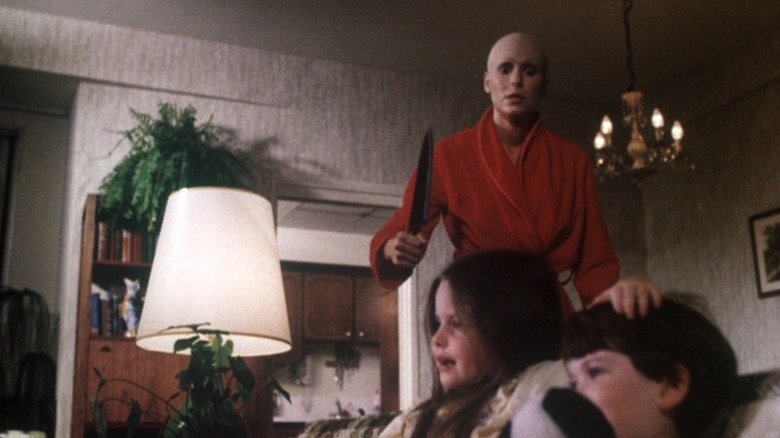
Written and directed by cult favorite Jeff Lieberman, "Blue Sunshine" takes a novel approach to zombies. A crooked politician named Ed Flemming (Mark Goddard) sold an exotic variant of LSD called Blue Sunshine to his college classmates several years ago. Now those same classmates are suddenly going bald and flying into homicidal rages. Jerry Zipkin (Zalman King) is falsely accused of committing the murders, and he goes on the run to find out what's really happening and clear his name. With morbid humor, bizarre visuals, and a healthy dose of paranoia, "Blue Sunshine" is a fascinating zombie film that perfectly captures the unease of post-Nixon American life.
Once again, a '70s zombie film feels eerily prescient. A bank of televisions plays Flemming's campaign ads, including a slogan that bleats, "It's time to make America good again!" The post-Watergate political conspiracy gives the film a creepy, mysterious feel, as paranoia seeps in through every frame. Lieberman adds a dash of surrealism to the proceedings: A puppet show at one of Flemming's campaign rallies fills the screen, increasing the sense of unreality and utter absurdity of the United States in the late '70s. A card at the end of the film tells the viewer that there are still 255 doses of Blue Sunshine unaccounted for, implying that there are at least 255 more latent killers on the loose, leaving the viewer unmoored and helpless against the corrupt ticking time bomb at the heart of America.
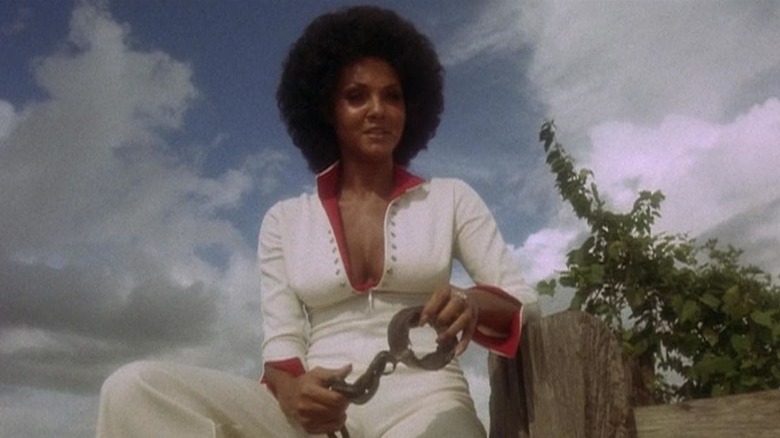
"Sugar" Hill (Marki Bey) is in love with Langston (Larry D. Johnson), the owner of popular nightspot Club Haiti. When mob boss Morgan (Robert Quarry) orders Langston's murder after he refuses to sell the club to him, Sugar takes her revenge on Morgan and his men with the help of Haitian Vodou practitioner Mama Maîtresse (Zara Cully). Mama calls on Baron Samedi (Don Pedro Colley), a deity who commands the dead. Baron Samedi's zombies dispatch Morgan and his men as Sugar revels in her righteous quest for vengeance.
Some of the earliest cinematic zombie stories focused on Vodou, but they were rarely told from the point of view of Black protagonists. As a Blaxploitation zombie movie, "Sugar Hill" shifts the story of zombies from mindless, voiceless Black characters to a story of Black heroes with agency who seek retribution against white villains who have wronged them. The film features some of the eeriest zombies on this list, with their bulging, glowing eyes and earthy, rotted frames.
While the zombies are frightening, they're also unique on this list as being agents of justice rather than frightening monsters. The zombies attack on Baron Samedi's commands, and he only directs them to devour the men responsible for Langston's death. With strong direction from Paul Maslansky, two unforgettable performances from Bey and Colley, and top-notch creature design, "Sugar Hill" is a pulse-pounding, cathartic combination of horror and revenge thriller, and a sterling example of Blaxploitation horror.
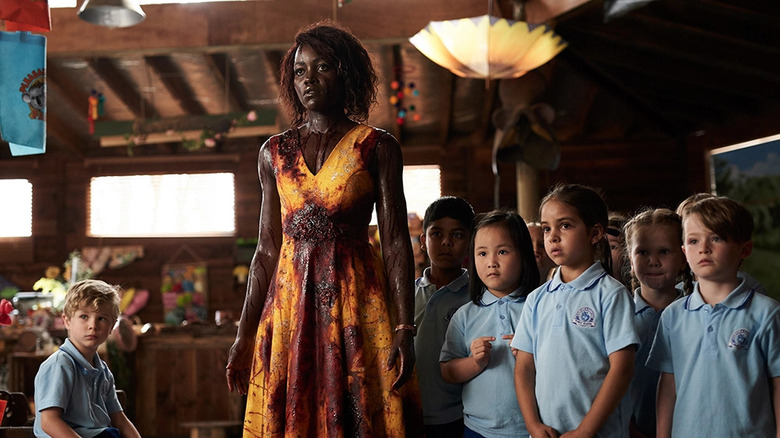
This Australian film from writer-director Abe Forsythe is a cautionary tale. When a U.S. Army testing facility loses control of biological test subjects, zombies make their way to Pleasant Valley Farm. A group of young children is on a field trip to the farm, accompanied by their teacher Miss Caroline (Lupita Nyong'o) and Dave (Alexander England), the uncle of one of the students. Dave is a screw-up, and he initially spends more time insulting the children and hitting on Miss Caroline than helping the situation. When the zombie threat becomes obvious, though, Dave steps up and helps Miss Caroline convince the children that it's all just a game as they conga their way through fields of zombies and pass snarling corpses disguised as scarecrows.
"Little Monsters" is uproarious and surprisingly sweet. It features a tried-and-true (but still hilarious) comedy trope in Teddy McGiggle (Josh Gad), a saccharine children's entertainer who turns out to be selfish, lecherous, and the absolute last person you want in your bunker when the zombie apocalypse hits. It's a smart narrative choice, as it throws a live grenade into the already tense situation and manages to set up Dave, who initially seems irredeemable, as Miss Caroline's Prince Charming. Still, the true hero of "Little Monsters" is Miss Caroline, proving once and for all that teachers are undervalued and that when things take a turn for the worse, men can't be trusted.
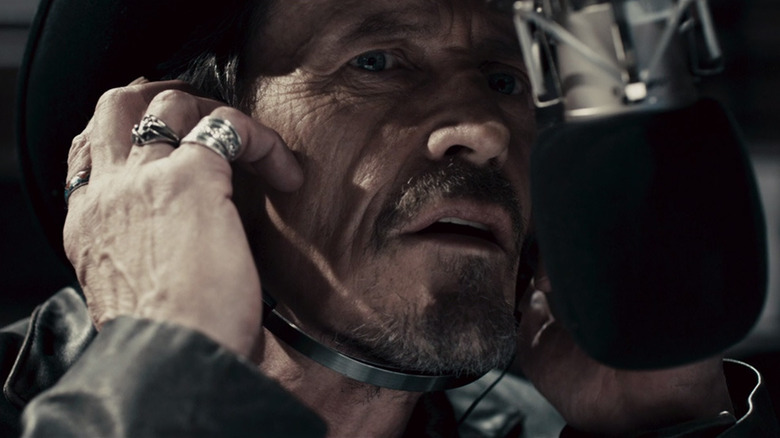
Grimly funny, with dynamic direction from Bruce McDonald, "Pontypool" is a fascinating look at the virality of language. Tony Burgess' script, based on his novel "Pontypool Changes Everything," takes an avant-garde approach to zombies. They aren't infected by radiation or nuclear waste, nor are they resurrected by Vodou. In "Pontypool," certain words are infected, and hearing the wrong thing can turn people into mindless monsters. That's a problem for radio host Grant Mazzy (Stephen McHattie), who reports on the town's descent into chaos while trying to figure out how not to spread the contagion further.
McHattie gives a tour de force performance. Mazzy is a grizzled warrior poet stuck doing traffic and school closure announcements, frequently going off script to rant about the state of the world or speculate on the cause of the zombie outbreak. McHattie turns Burgess's lyrical dialogue into thunder and lightning. The film primarily takes place in Mazzy's claustrophobic recording booth, but between McDonald's direction and McHattie's performance, "Pontypool" rarely loses its crackling energy. The idea of "infected words" is fascinating, especially since English seems to be the only language affected, suggesting several routes of interpretation regarding the poisonous effects of cultural hegemony and the loss of nuance in a world that wants instantaneous answers. Mazzy's poetry stands in stark contrast to this loss of meaning. He does battle with the forces of meaninglessness, both in his daily life and his crusade to fight the zombies at his doors.
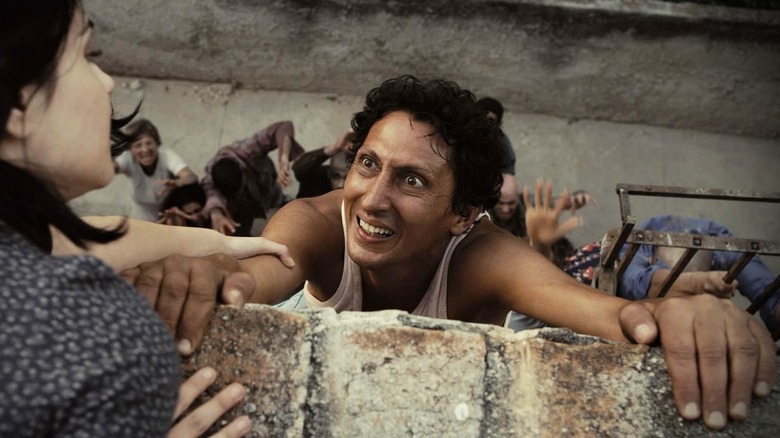
Juan (Alexis Díaz de Villegas) is a survivor. A Cuban native, he survived fighting in Angola and the turmoil of the Special Period, and now he faces a new challenge that seems like business as usual: zombies. Juan is used to finding ways to thrive within chaos, so when he discovers that he and his friends are expert zombie killers, he sets up a business. He dispatches customers' zombified relatives, once again doing other people's dirty work for them.
Writer-director Alejandro Brugués packs a lot of political meaning into his horror comedy. The Cuban government identifies the zombies as "antisocial people in collusion with the U.S. empire," and the military attempts to force Juan and his friends to fight the threat for them. Though the story lags a bit in places, Brugués does a good job of balancing the competing tones. Juan alternates between action star, comedian, and unlikely hero, and Díaz de Villegas — who died in June of 2022 — handles each aspect of Juan's personality with grace and humor. The film holds an interesting combination of ideas and approaches to the zombie subgenre, and "Juan of the Dead" is a vital entry from an underrepresented country in horror cinema.
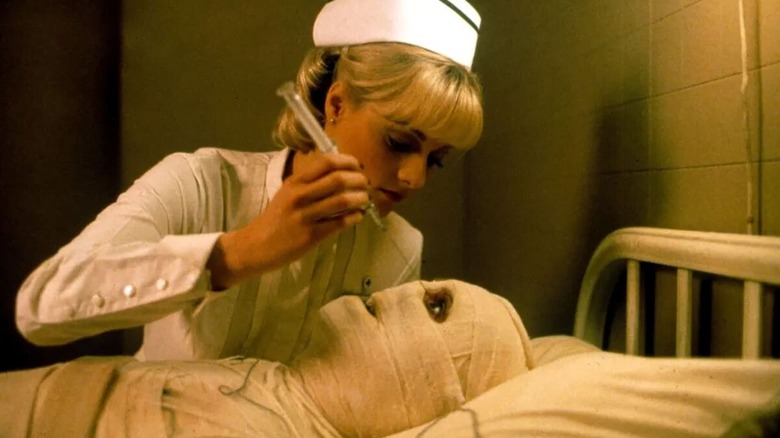
Potters Bluff is an odd town. It seems friendly on the surface, but visitors keep getting murdered. Townspeople surround them, photograph them, and kill them in gruesome ways. Sheriff Dan Gillis (James Farentino) can't figure out a possible motive or the identity of any of the killers. He enlists the local coroner, William Dobbs (Jack Albertson), to help him investigate. The investigation takes a turn for the even more bizarre when the murdered visitors turn up later, seemingly alive and happy as new residents.
"Dead & Buried" by director Gary Sherman and writers Ronald Shusett and Dan O'Bannon, is an odd and deliriously unsettling video nasty that still manages to shock and disturb over 40 years later. Shusett and O'Bannon wrote the original story for "Alien," and the visceral mixture of issues related to sex, death, class, and gender are just as present in "Dead & Buried" as they are in director Ridley Scott's 1979 classic. The death scenes are grisly and realistic, and the killers' use of photography contributes to the feeling that you're watching a snuff film. The film's finale only heightens that sense, as unforgettable images cascade across the screen as the characters — and the viewers — reel in disbelief. Shocking and timeless, "Dead & Buried" may not be as famous as O'Bannon's other work, but it deserves a spot in the zombie cinema canon.
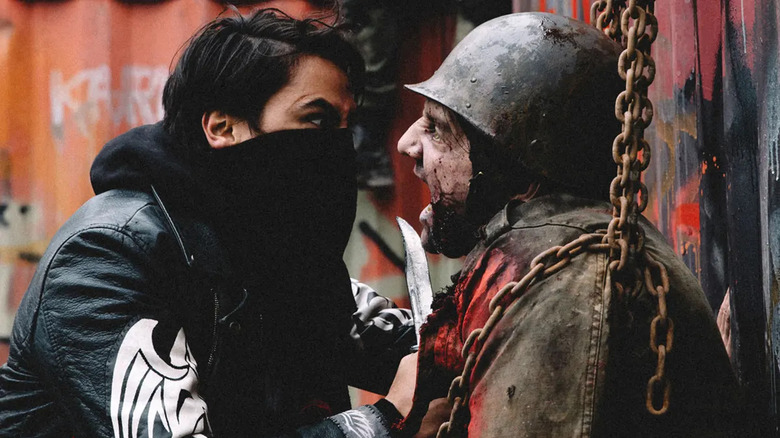
Filmmaker Jeff Barnaby died in October of 2022, but he leaves behind a body of work that includes the essential zombie film "Blood Quantum." Simultaneously gruesome and gorgeous, the film shows a talented filmmaker in total control of narrative and visuals. The story follows a First Nations community in the middle of a zombie outbreak. The Indigenous characters discover that they are immune to the zombie virus, while white people are highly susceptible to it. The film is clear about its historical and political messages. The white colonizers are a horde of mindless monsters bent only on consumption and destruction, and true to their pattern of past behavior, they keep trying to sneak their sick and infected into the Indigenous stronghold that is (far too charitably for some characters) taking in refugees.
No one knows why the virus appeared, though Moon (Gary Farmer) has a theory: The Earth "turned these stupid f***ing white men into something she can use again. Fertilizer." The dialogue exemplifies the film's combination of brutality and poetry. There's an aching sense of humanity in the film. "Blood Quantum" does not revel in its zombie kills, focusing instead on the pain and the waste of human life. Yet, there's hope in the film as well, especially with the white characters — who are largely selfish and useless — being burned off like an infection ravaging the Earth, giving the Indigenous characters room to breathe and space to begin anew.
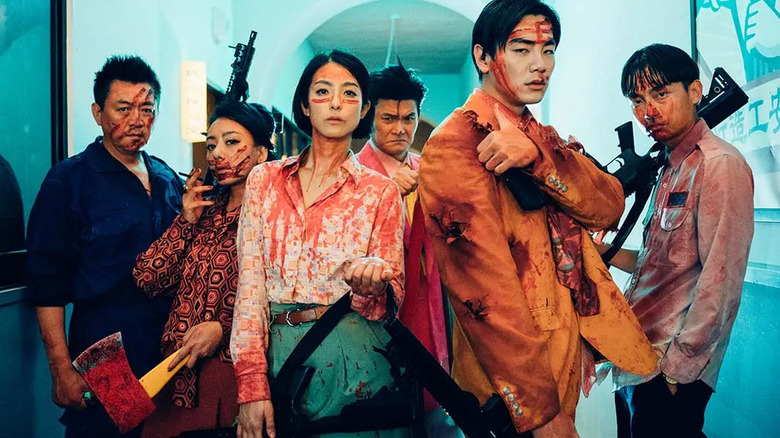
"A wrong movie makes you suffer for only 90 minutes. A wrong government makes you suffer for four years." So begins the frenetic and hilarious "Get the Hell Out," a tongue-in-cheek satire of Taiwan's raucous parliament. Terrifyingly fast and ravenous zombies take over the parliament floor, and disgraced MP Hsiung (Megan Lai) must team up with Wang (Bruce Ho), the security guard who won her open seat and is secretly in love with her, to fight the bloodthirsty monsters. Hsiung is pretty much the only member of parliament who isn't corrupt. Her main reason for entering politics is to oppose the building of a chemical plant in her hometown — the very chemical plant that is now creating all these zombies by dumping its toxic waste illegally.
Like most of the films on this list, "Get the Hell Out" has sharp political messages. Unlike some of the more serious and frightening movies, though, its satire comes in a rapid-fire mélange of cartoon, video game, and game show aesthetics, complete with winking product placements and over-the-top visual effects. The tone and pacing can be overwhelming at times, but "Get the Hell Out" is a wild, fun ride that skewers modern politics with more than its fair share of blood, guts, and laughs. It's a hard movie to track down, but hopefully, it will soon see the physical media release it deserves.
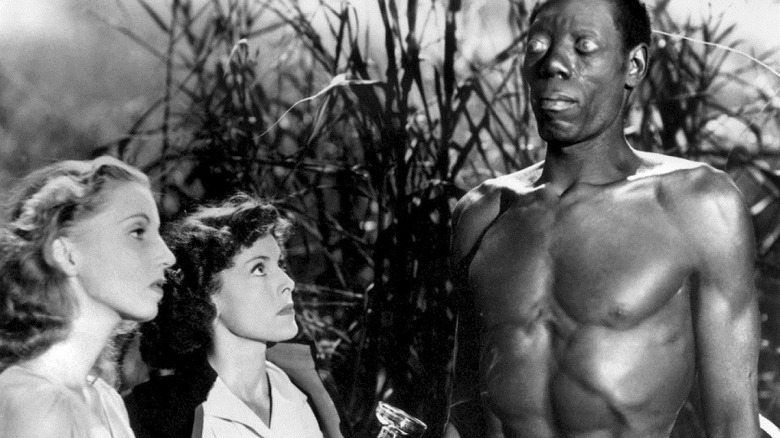
"I Walked with a Zombie" is one of the legendary collaborations between director Jacques Tourneur and producer Val Lewton for RKO Pictures. Betsy (Frances Dee) is a nurse hired to look after Jessica (Christine Gordon), the ill wife of Paul Holland (Tom Conway), a sugar plantation owner on the island of Saint Sebastian. The locals tell Betsy that Jessica mysteriously became a zombie shortly after Paul found out that she was having an affair. Most of the white characters look down their noses at the "superstitions" of Haitian Vodou, ascribing Jessica's zombie-like state to an unnamed fever, but the film makes it clear that it's the white colonizers who are ignorant about the ways that the world really works.
Betsy in particular is naïve and insensitive to the plight of the island's Black residents, whose ancestors were enslaved and who continue to work as servants for the white characters. Betsy is repeatedly depicted as ignorant and out of touch with reality. The Vodou rituals are not fetishized or exoticized. Rather, they seem more grounded than the privileged world the white characters inhabit. For a film made by white creators in 1943, "I Walked with a Zombie" has aged surprisingly well due in no small part to the talent and vision of Lewton and Tourneur as well as screenwriters Curt Siodmak and Ardel Wray, a woman who also frequently collaborated with Lewton.
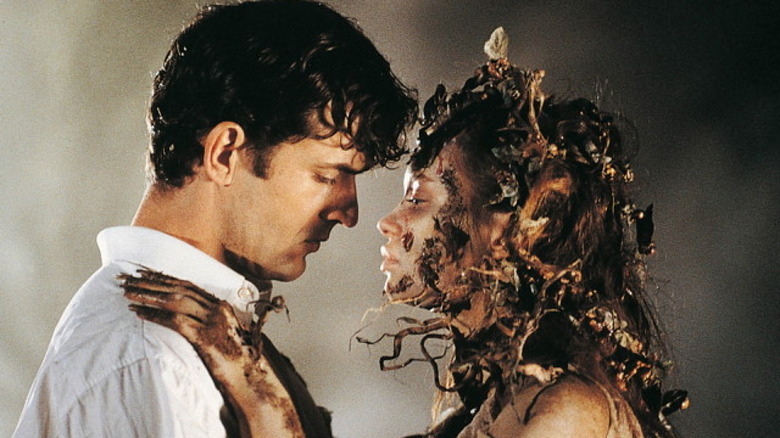
The most bizarrely sexy film on this list, director Michele Soavi and writer Gianni Romoli's "Cemetery Man" is a true cult classic. Starring Rupert Everett as Francesco Dellamorte, the caretaker of a cemetery in a small Italian village, "Cemetery Man" is a dreamy reflection on life after death. Dellamorte's cemetery is prone to resurrecting the dead, and he spends his nights dispatching corpses. The mayor refuses to help, so Dellamorte goes about his lonely duty until he falls in love with a beautiful young widow (Anna Falchi). When she dies after being attacked by her late husband, Dellamorte begins to unravel, losing touch with reality and seeing the widow's face everywhere he goes.
Soavi's work with Italian horror master Dario Argento (Soavi was the assistant director on Argento's "Tenebrae," "Phenomena," and "Opera") shines through in "Cemetery Man." The film's unique framing and beautiful visuals contribute heavily to its cult status. It's an odd film, swooning over death rather than running from it. Dreamy shots of fabric blowing in the wind or reflections undulating in a rippling pool sometimes make it seem more like a Gothic romance than a zombie horror movie. Death is seen as a natural force. The zombies have roots growing out of them, and when the widow is reanimated, she's just as beautiful in death as in life. "Cemetery Man" can be an acquired taste, but it is a visually stunning film with an intriguing mix of ideas swirling at its center.
Read this next: The 20 Best Zombie Movies Of All Time
The post 15 Underrated Zombie Movies That You Really Need to See appeared first on /Film.
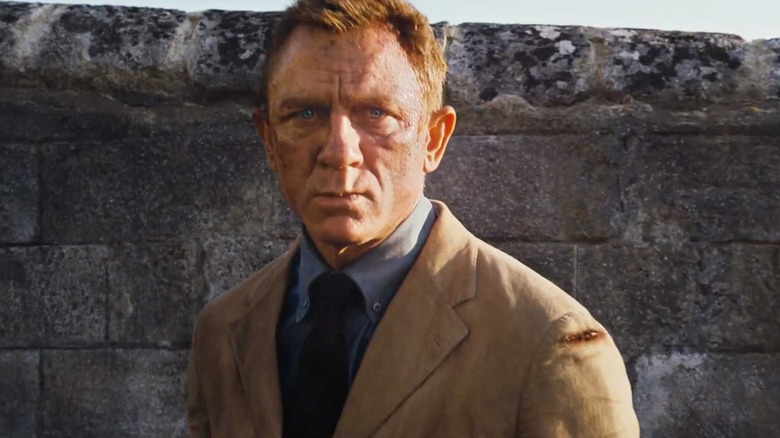
After a long-delayed release, we said goodbye last year to Daniel Craig's James Bond in "No Time to Die," and we still haven't recovered. After spending nearly 18 years playing the iconic character, Craig transitioned out of the role and he's shown no signs of slowing down just yet. Recently, he's been channeling his inner southern gentleman again, reprising the role of detective Benoit Blanc in Rian Johnson's "Glass Onion," the follow-up to the murder mystery hit "Knives Out."
While promoting the upcoming theatrical release of "Glass Onion," Craig shared with the LA Times (via Entertainment Weekly) the two reasons why his James Bond had to die -- and, to be quite frank, his reasoning shouldn't come as too much of a surprise:
"One, for the franchise, was that resets start again, which [the franchise] did with me. And I was like, 'Well, you need to reset again.' So let's kill my character off and go find another Bond and go find another story. Start at [age] 23, start at 25, start at 30."
The idea of finding someone younger for the role makes sense, especially given the stunts involved in the Bond films. That said, it is highly unlikely that we'll see a truly young 007. Bond screenwriter Michael G. Wilson is on record having said that casting younger doesn't mesh with the overall visualization of the character as a "veteran" who has "been through the wars, so to speak" and has "probably been in the SAS or something" before becoming a secret agent. As for Craig's second reason for Bond's demise ... it's personal.
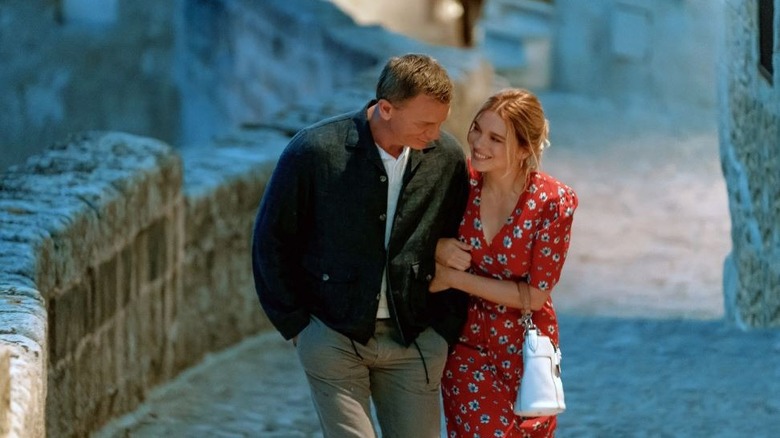
Craig's second reason for why it was James Bond's time to die is pretty simple. "The other [reason] was so that I could move on. I don't want to go back," Craig shared. "I suppose I should be so lucky if they were to ask me back, but the fact is I need to move on from it. The sacrifice that he makes in the movie was for love and there's no greater sacrifice. So it seemed like a good thing to end on."
If you're fuzzy about the details, towards the end of "No Time to Die," Bond becomes infected with a nanobot virus that is programmed to kill Léa Seydoux's Dr. Madeleine Swann and their daughter, Mathilde. Knowing that he poses a threat to the ones he loves, Bond decides to stay on the island that houses the nanobot factory and accept his fate. He is presumably killed when missiles strike the island to ensure the destruction of the nanobot technology. A fitting end, considering the trajectory of the character's arc across the series.
While Craig's Bond dying was originally planned out between him and producer Barbara Broccoli when he signed on, that doesn't soften the blow entirely. But the exit has freed him up to pursue other projects that allow him to explore. If his work with Rian Johnson is anything to go by, there's plenty more the actor has to offer outside of what we've seen from him as James Bond.
Read this next: The 18 Best Action Movie Actors Ranked
The post Daniel Craig Explains The Two Reasons Why His James Bond Had To Die appeared first on /Film.
Read more of this story at Slashdot.
Read more of this story at Slashdot.
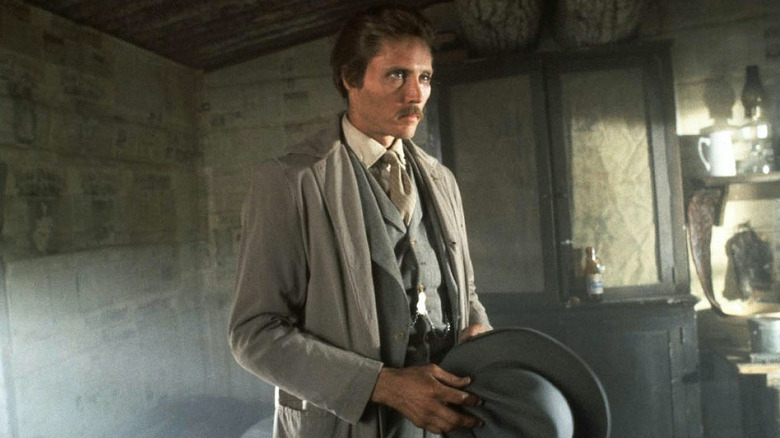
Christopher Walken always disagreed with the mostly negative critical response to 1980's "Heaven's Gate." He plays a supporting role in the legendary flop of a Western, giving one of his most subdued and haunting performances as the morally-conflicted cattle baron enforcer Nate Champion. Walken had only just won an Oscar for Best Supporting Actor in director Michael Cimino's previous film, "The Deer Hunter," when the pair reunited for "Heaven's Gate." He couldn't have known what he was getting into.
He stands by it, however. As he told IndieWire in 2012, Walken "always thought it was good" and that the hate it received was undeserved. To critics like Vincent Canby of the New York Times, the film was "an unqualified disaster," one with flimsy themes and shoddy craftsmanship unbecoming of a filmmaker with such strong ambition as Cimino. Stories of the movie's troubled production and massive budget had been public knowledge since its first week of filming.
The poettry of Cimino's controversial 1978 Vietnam film "The Deer Hunter" was suddenly perceived as a fluke after "Heaven's Gate." Canby was just one of many critics who called the movie shallow, pretentious, and overlong. It was a disaster, with disastrous consequences for the film industry.
Still, Walken told IndieWire he felt that "Heaven's Gate" was "disproportionately beat up at the time, including by people in the business. I never understood that." To watch the movie now in its restored four-hour director's cut, it's easier to see the intention and majesty of Cimino's vision -- one that was obscured by industry gossip in 1980.
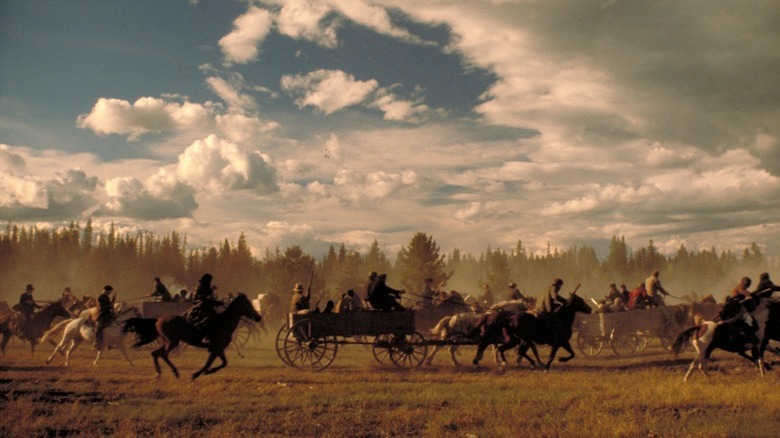
Like many epics (misunderstood or not) of its era, "Heaven's Gate" uses its milieu –- rendered lovingly in specific, eccentric detail –- as a means of exploring larger questions about America. In particular, it deals with the circumstances of European immigrants in the West, zeroing in on the punishing struggles and minimal rewards of their new lives.
The movie dramatizes the real-life Johnson County War (the film's original title according to Peter Biskind), taking many liberties. The poor men and women at its fringes are trying to make any kind of life for themselves in America, stealing cattle from the wealthy just to survive. To hear men like capitalist Canton (Sam Waterson) talk about them, they're a cancer on his booming frontier civilization. He wants them dead.
Marshal Averil (Kris Kristofferson) becomes involved with the conflict. A former Harvard graduate whose commencement takes up much of the movie's first half hour, his heroic involvement in the frontier conflicts is mysterious. He seems to be putting on the role of adventurer. By the time of the movie's epilogue, he will be hanging out with New England WASPs again.
In the middle of Canton and Averil is Champion (Walken), who does the dirty work of keeping the county's immigrants in line, mostly through violence. If Walken's primary concern while acting is keeping himself amused, there's little that's funny in "Heaven's Gate."
The film's story is thoughtful and grim, even in scenes like the protracted roller skating sequence (one scene that's iconic for the wrong reasons, looking out-of-touch and silly in a 19th-century Western). Difficult scenes of sexual assault and brutal slayings ensure the movie is appropriately depressing and uncommercial.
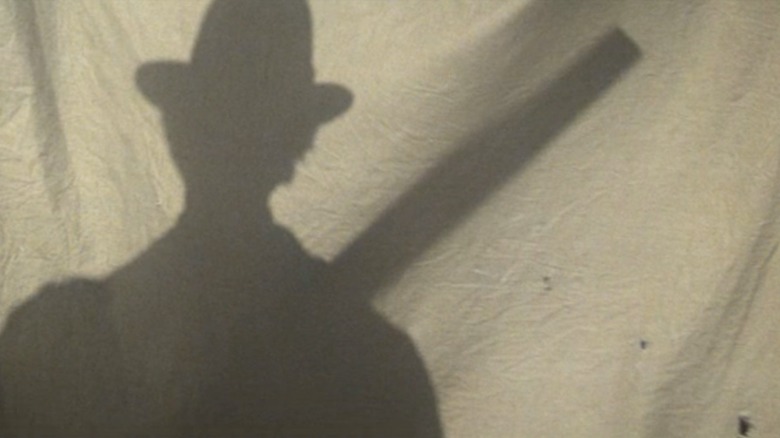
Being difficult and uncommercial would not have been the kiss of death for "Heaven's Gate" if it had won critical praise or awards. But it got nothing.
For some time, the movie was synonymous with a particular kind of Hollywood disaster: The overambitious, expensive, self-indulgent flop that was capable of practically killing a famous studio, United Artists. Peter Biskind, author of "Easy Riders, Raging Bulls," called the movie a "sorry end to New Hollywood," a cinematic movement throughout the 1970s that saw serious filmmakers taking advantage of the fractured studio system to make personal art. After "Heaven's Gate," those studios refused to let a "Heaven's Gate" happen. Never again would they pour that kind of money (a hefty $44 million in 1980 dollars) into a destined turkey.
Cimino was accused of dictatorial tendencies. Stories of his micromanaging perfectionism and wild expenses have been repeated since the movie's first week of production. Per Biskind, the director was shooting 30-plus takes per scene and going through $1 million a week. Speaking to Rolling Stone in 2016, Walken claimed "everyone was optimistic" during filming. He probably wasn't talking to the movie's producers, who saw the production spinning wildly out of control and sought in vain to steer it towards completion.
When the movie was finally released in November 1980, the New York premiere screening was so disastrous that Cimino and United Artists had to cut over an hour of its runtime before releasing it wide in April 1981. Walken, ever the movie's champion, told The Hollywood Reporter in 2020 that he walked out of that screening thinking he had "watched a good movie."
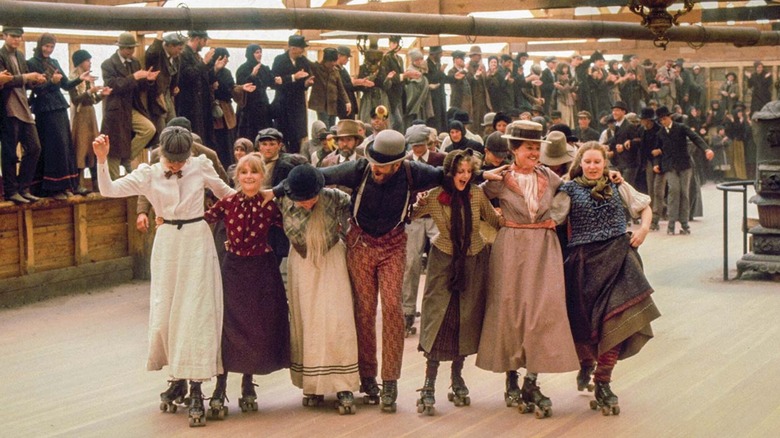
Walken would only find his opinions vindicated over 30 years after the movie's release in 2012, when Michael Cimino was given the chance to recut "Heaven's Gate," bringing it closer to the version that screened at the catastrophic 1980 screening. It is, indeed, a "good movie."
"Heaven's Gate" is bold, muddy, and broken-hearted, a loose and rambling epic retelling of an obscure skirmish in late 19th-century U.S. frontier history. It deals with the unromantic details of human living that often get skipped over in history books, and it uses every second of its nearly four-hour runtime to help construct and deepen its sprawling drama.
The wealth of period detail in its production design is worth seeing as well. Walken, infamous for his tendency to steal something here or there from the sets on which he worked, would have had a field day. Walken told IndieWire that it "was always a beautiful movie to look at," impeccably designed and shot on location in Glacier Park, Wyoming, with enormous care by the great cinematographer Vilmos Zsigmond.
As time passed, others who worked on the movie also admitted to having affection for it, showing that even if the film was designated a "disaster," it's worthy of admiration. In a conversation with the Financial Times promoting the movie's 2012 cut, Zsigmond called Cimino a "master painter." In that same article, Isabelle Huppert, who plays a madame named Ella in the movie, claimed to "love the film" as well. Walken is in good company.
Read this next: 13 Box Office Bombs That Are Truly Worth A Watch
The post Christopher Walken Thinks Heaven's Gate Got More Hate Than It Deserved appeared first on /Film.
Wherein we discuss getting old, World of Warcraft: Dragonflight, Castlevania: Symphony of the Night (and Castlevania generally), Weird: The Al Yankovic Story, Black Panther: Wakanda Forever (mild spoiler warning!), Kevin Conroy, and Marvel Snap. Starring Ryan Scott and Ryan Higgins.

Chainsaw Man Season 1 episode 7 is arriving soon, and here’s everything you should know about the release schedule of the episode.
The anime has entered the Eternity Devil arc, and our devil hunters are trapped in the stomach of the powerful devil. No one can find a way out; the devil is not ready to let them go before he can have Chainsaw Man’s heart. Now, the seventh episode of the anime might show us how the brave Chainsaw Man defeats the devil and protect his colleagues.
Chainsaw Man episode 7 will release on Crunchyroll on Tuesday, November 22, 2022, while in Japan, the episode will come out on Wednesday, November 23, 2022. Fans must follow the below time schedule to track the episode in their time zones:
The devil hunters looked for ways to get out of the hotel, but they couldn’t succeed. While the entire team was thinking about what could be done to break the trap, Denji enjoyed the soft bed in the hotel room. After some time, the Eternity Devil showed up, and he told everyone about his desire to kill Chainsaw Man. After that, he said that if the rest of the devil hunters would let him take what he wanted, he’ll let them leave peacefully.
MANGA: Chainsaw Man Manga Hits 20 Million Copies in Circulation! ?#animetv_jp pic.twitter.com/IfbvJDNaxO
— AnimeTV NEWS (@animetv_off) November 17, 2022
Except for Aki and Himeno, everyone was ready to let him take Denji’s life. Later, Himeno came out clear as she revealed her true colors by stopping Aki from saving Denji. However, Aki came in between when the team was about to stab Denji with a knife. Seeing Aki’s condition, Denji goes to fight the Eternity devil.
The post Chainsaw Man Episode 7 Release date and Time appeared first on ForeverGeek.

Spider-Man: Miles Morales is out now for PC as well, and the first comparison video compares the new PC port to the PS5 version.
As could be read in our PC impressions article, Sony again did some great work on this PC port and going by this new comparison video of ‘ElAnalistaDeBits’, the PC version also benefits from better ambient occlusion and better ray-traced shadows. Interestingly, however, is that the PS5 version currently offers a slightly higher drawing distance compared to the PC version and the overall vegetation quality is also better on Sony’s console. Whether this is caused by a bug that can be fixed via a post-launch patch, remains to be seen, but it’s interesting to see nonetheless. Also interesting are the game’s loading times, which are vastly better on PlayStation 5 compared to the PC port. Check out the Spider-Man Miles Morales PC vs PS5 comparison video down below:
Spider-Man: Miles Morales is available globally now for PlayStation 5 and PC. Here’s what our very own Alessio Palumbo had to say about Sony's latest PC port:
With Marvel's Spider-Man: Miles Morales PC, Sony confirms its commitment to the platform. It's the latest in a series of great ports that deliver the definitive version of a great game, providing enhanced visuals (including Ultrawide support), amazing granularity for tweaking all kinds of settings, and even full support for the DualSense controller's haptic feedback and adaptive triggers.
In that sense, they could push Microsoft to do better, as they've been a bit lacking in the area despite being in the PC market for much longer. On the other hand, Sony's ports remain long staggered from the console releases. PlayStation president Hermen Hulst recently said it would be at least a year before a PS5 game gets to PC (live service titles notwithstanding).
The post Spider-Man Miles Morales PC vs PS5 Comparison Shows Better Ray Traced Shadows and Ambient Occlusion on PC; Drawing Distance Slightly Higher on PS5 by Aernout van de Velde appeared first on Wccftech.
If you like free PC games, look no further! Check out our updated list of all the best AAA and indie free games this week, starting with Evil Dead: The Game on Epic, Tom Clancy's Splinter Cell on Ubisoft Connect and much more freebies!
The post List of Free PC Games (Updated November 19th 2022) appeared first on Indie Game Bundles.
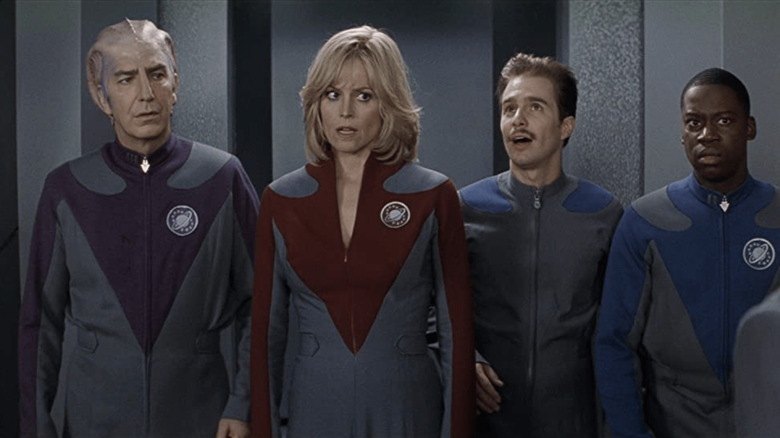
What's the best "Star Trek" movie? Is it "The Wrath of Khan"? "The Voyage Home"? "First Contact"? Many a Trekkie have said, half or fully seriously, that the answer is the loving parody film, "Galaxy Quest." "High concept" doesn't even begin to cover the film: aliens (the Thermians) who believe that a short-lived sci-fi series was a documentary recruit the cast to help them battle a galactic tyrant.
The sci-fi show in question is a "Trek" parody, a program that was cut short but kept alive decades later by an obsessive fandom. Jason Nesmith (Tim Allen) is William Shatner, the egomaniac who soaks up public adoration so much he doesn't notice how his co-stars loathe him. Alexander Dane (Alan Rickman) isn't a one-to-one for Leonard Nimoy, but his resentment of playing the alien "Dr. Lazarus" is in line with Nimoy's autobiography, "I Am Not Spock" (his gradual acceptance of Lazarus mirrors the sequel, "I Am Spock"). Sigourney Weaver, a silver screen sci-fi icon in her own right, plays the series' female lead Gwen DeMarco/"Tawny Madison". Far from the hardened Ellen Ripley, Tawny was the show's eye-candy, and Gwen isn't too pleased about her legacy.
The lampooning doesn't end with the actors. "Galaxy Quest" cracks jokes about all the "Trek" hallmarks: technobabble, red shirts, and of course the fans who obsess over the "canon" of an imaginary world. According to writer Robert Gordon and director Dean Parisot, the challenge of the movie was striking the right balance of parody and sincerity.
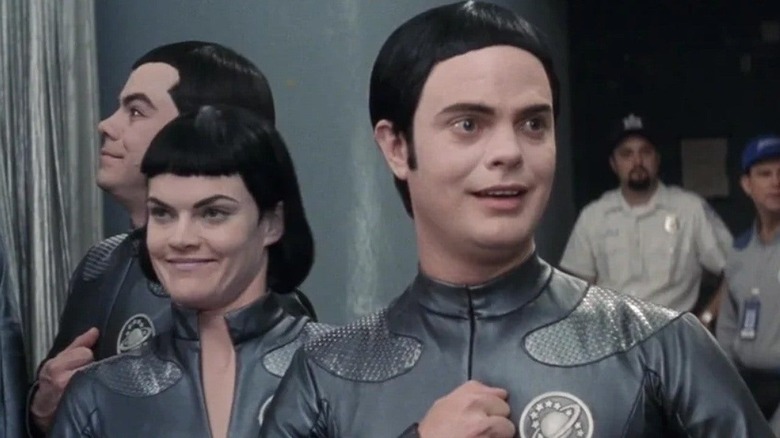
MTV published an oral history of "Galaxy Quest" in 2014. The premise was there from the beginning, but the original script, by David Howard, was titled "Captain Starshine." Producer Mark Johnson liked the pitch but felt the script needed a touch-up, so he recruited Gordon.
Gordon didn't read "Captain Starshine" and worked only off a logline. He was reluctant to take the job, feeling, "[the story] could be a great idea or it could be a terrible idea. Gordon added some of the scene's funniest moments along the way, such as the crew scratching the ship when they take it out of drydock. However, he felt he only "got it" when he wrote the film's most emotional scene: where Nesmith and co. have to admit the truth to the Thermians.
Parisot agreed, saying: "The movie needed to begin as a mockery and end as a celebration. That's a hard thing to do. Part of the mission for me was to make a great 'Star Trek' episode."
The evolution is most apparent in Alexander's character development. His antipathy burns brightest for Lazarus' catchphrase, "By Grabthar's hammer, by the suns of Worvan, you shall be avenged." In the third act, to comfort the dying Thermian Quellek (Patrick Breen), Alexander recites the line in earnest. Then there's Jason's gambit to defeat Sarris, where he reverses time by 13 seconds to undo their loss. This could easily work as the ending to a real "Star Trek" movie and, indeed, is reminiscent of "Next Generation" episode "Cause and Effect."
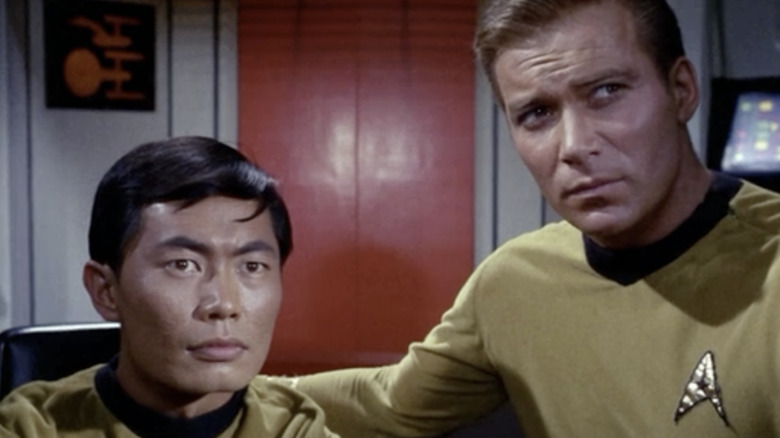
"Galaxy Quest" parodies both the fans of "Star Trek" and its makers, yet both parties loved the movie. Some "TOS" cast members gave tongue-in-cheek reactions. George Takei called the movie, "a chillingly realistic documentary." William Shatner said the picture was, "very funny," though joked, "I don't know what Tim Allen was doing. He seemed to be the head of a group of actors and for the life of me I was trying to understand who he was imitating."
It wasn't just actors from "The Original Series" either. Patrick Stewart, Captain Jean-Luc Picard himself, told the BBC how he initially didn't want to see the movie because he thought it was simply, "making fun of 'Star Trek.'" Who convinced Stewart to give it a chance? Jonathan Frakes, who played Commander William Riker and directed "Star Trek: First Contact," "Star Trek: Insurrection," and plenty "Star Trek" episodes. If any of the "Next Generation" cast could give a verdict on how to make a good "Star Trek" movie, it was Frakes. Stewart recalled seeing "Galaxy Quest" in a theater Saturday night:
"I found it was brilliant... No one laughed louder or longer in the cinema than I did, but the idea that the ship was saved and all of our heroes in that movie were saved simply by the fact that there were fans who did understand the scientific principles on which the ship worked was absolutely wonderful. And it was both funny and also touching in that it paid tribute to the dedication of these fans."
It's easy to make fun of something, but harder to do so from a place of love. The reactions from Trekkies and "Trek" alumni show that Gordon and Parisot pulled it off.
Read this next: Sci-Fi Movies You Never Realized Were In The Same Universe
The post Galaxy Quest's Director and Writer Knew Their Mission Was a Difficult One appeared first on /Film.
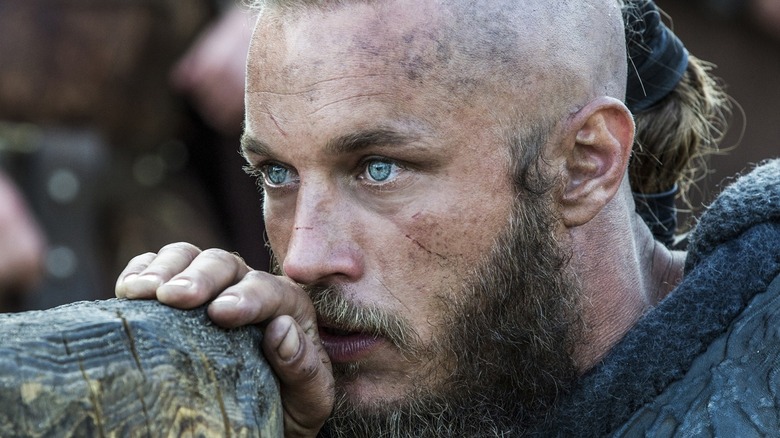
Making its debut on History back in 2013, "Vikings" delivered a visceral, bone-crunching journey to the eighth-century Scandinavia and the age of the Vikings. The gritty, violent saga told the story of Ragnar Lothbrok (Travis Fimmel), a farmer who became a warrior and, ultimately, a king. Another part of the series' ongoing storylines involved his first wife, the shieldmaiden Lagertha (Katheryn Winnick), their son Bjorn (Alexander Ludwig), and various other characters who were introduced over the course of the show's six seasons.
As "Vikings" creator Michael Hirst explained to Looper, the writer enlisted a Viking historian to explore some of the most notable figures from that era. He wound up honing in on Ragnar because he was "the first great Viking leader to emerge from the myth and legend, and that was perfect in many ways because it was the beginning of the Viking age." While the series concluded in 2021, fans looking for similar shows to binge have no shortage of options; here are 15 shows like "Vikings" that you really need to see.
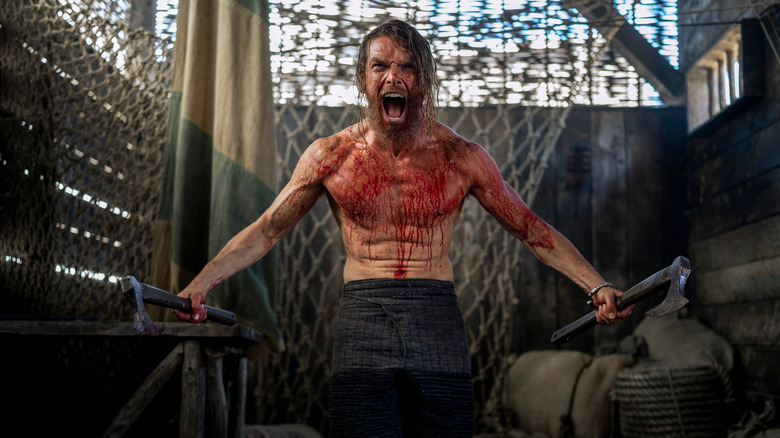
Before "Vikings" completed its run, Michael Hirst teamed up with Netflix for a spinoff series, "Vikings: Valhalla." The new series was set a century after "Vikings," telling the origin stories of legendary historical figures like Leif Erikson (Sam Corlett), Freydis Eriksdottor (Frida Gustavsson), Harald Sigurdsson (Leo Suter), and others. "I am beyond excited that we are announcing the continuation of our 'Vikings' saga," said Hirst in a statement, promising that showrunner Jeb Stuart "will bring new storylines and a powerful visceral vision to stories about some of the most famous Vikings known to history."
At the very heart of the show is the relationship between Leif and Harald, who share a warriors' bond that Suter compared to that of Butch Cassidy and the Sundance Kid. "I think there's a yin and yang element to these two characters," he explained in an interview with The Wrap. "They complement each other quite well. They come from two different ends of the Viking world. And Leif brings like a stillness and a composure that complements Harald's brazen brashness." Meanwhile, it's no surprise that Suter's character has become a fan favorite, given Harald's "berserker" style of combat and the mark he left on history. "Someone described him ... as 'The Thunderbolt of the North' — a chronicler at the time," added Suter. "So yeah, he was a big deal."
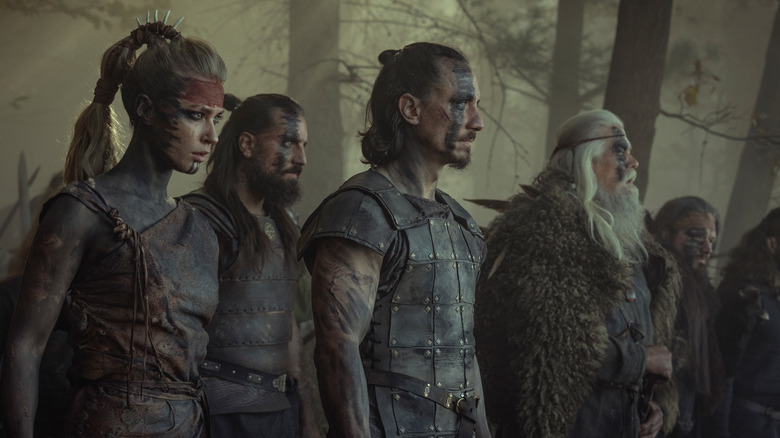
Making its debut in 2020 on Netflix, German television drama "Barbarians" filled the void for fans of "Vikings" when that show ended its run. Treading similar ground, "Barbarians" is set in the year 9 CE during the Roman occupation of Germania, leading to the Germanic uprising led by Roman soldier Arminius (Laurence Rupp), who was ripped from his Germanic tribe as a child and given to the Romans, who raised him to be a warrior. As a review in Entertainment Weekly pointed out, "Barbarians" follows the "Vikings" model of melding history with fiction, adding plenty of creative license and brutal, bloody battle sequences. While Arminius is clearly the protagonist, another key character is Thusnelda (Jeanne Goursand), princess of her tribe and a formidable warrior in her own right.
The first season concluded with the Battle of Teutoburg Forest, a decisive conflict that ended Rome's occupation of what would eventually become Germany. Interestingly, the show's depiction of this 2,000-year-old battle dragged "Barbarians" into controversy. As the New York Times explained, the battle was seen as an "ideological rallying point" for the Third Reich, and continues to fufill that function today for German nationalists and neo-Nazis. However, "Barbarians" showrunner told the Times that his intention was to reclaim that historic battle from the far right. "We didn't want to be scared away and leave the subject to those forces we detest," he declared.
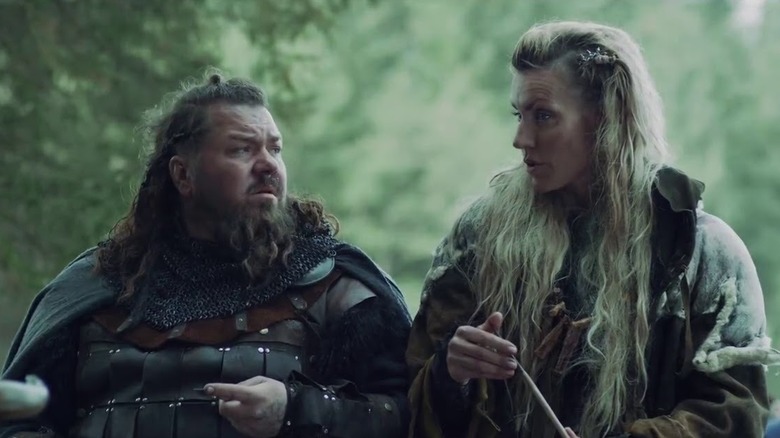
Being a Viking was about more than berserker battles. The Norwegian series "Norsemen," for example, delves into comedic aspects left unexplored by "Vikings." Set in the eighth century, "Norseman" follows the lives of the residents of a Viking village as they grapple with highly relatable 21st-century issues like power struggles, sibling rivalries, and gender equality. Taking a page from "Monty Python and the Holy Grail," both the show's characters and its humor boast a modern sensibility, while the historical setting is portrayed in all its gritty, grimy, ultra-realistic glory.
As series creator Iver Helgaker revealed during an interview with What's on Netflix, he got the idea for "Norsemen" after watching Taika Waititi's brilliant horror satire "What We Do in the Shadows." "And that made us think about the History Channel's 'Vikings' and 'Game of Thrones,' where everything is about the big historical and life-changing events. We thought it would be funny to focus on what happens in between all of that and just take on the everyday stuff," he explained.
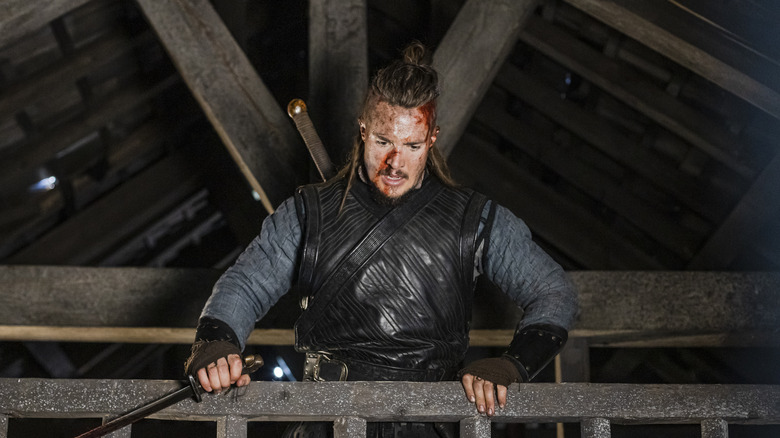
The story told in "The Last Kingdom" is similar to the one in "Vikings," but with an added twist. Set in the ninth century, the series is based on the historical novels of Bernard Cornwell. Its protagonist is Norse warrior Uhtred (Alexander Draymond), who was born a Saxon but raised by Vikings, as he leads his people against the Saxons while striving to reclaim his birthright. In an interview with The Carousel, Draymond admitted that he was flattered by comparisons between "The Last Kingdom" and "Game of Thrones," but hastened to explain why the two shows are fundamentally dissimilar. "I think 'The Last Kingdom' is a bit grittier and dirtier, and then it's based in history — I think it's a very different show," he said.
While "The Last Kingdom" ended its run after five seasons, Variety reported that the series finale wasn't the end of the tale, and that the show would be followed by a feature film, "Seven Kings Must Die," to wrap up the storyline. "It's been such a privilege to tell Uhtred's story for five seasons," Dreymond said in a statement regarding the film, which will stream on Netflix at some point in 2023. "It's going to be an epic end to a wonderful journey."
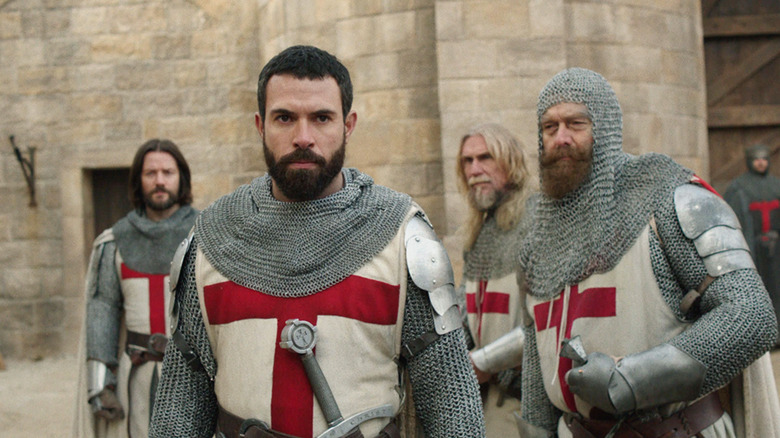
While there are no Vikings in "Knightfall," the battles are no less bloody and barbaric than the ones in Michael Hirst's historical epic. Although it also hails from History, "Knightfall" is set in the early 1300s, and recounts the rise and fall of the Knights Templar. The series' protagonist is the fictional Templar leader Landry du Lauzon (Tom Cullen), who leads his knights on a quest to retrieve the legendary Holy Grail. The series received a big shot in the arm in its second season when "Star Wars" icon Mark Hamill joined the cast as Master Talus, a veteran Templar charged with training initiates.
While the series only lasted two seasons, there's no denying that the show was developed with an eye towards capturing the same audience who grew to love "Vikings." In an interview with Fansided, Cullen shared his excitement about being part of such a vibrant historical drama. "The show, in terms of the epic scale, is something that really, really thrilled me," he said. "It's something that I've dreamt of being in since I was a kid. I used to run around Wales with a wooden sword and shield with my mates, and I've always been really influenced by films like 'Gladiator' — I think I saw 'Gladiator' seven times in the cinema — and 'Prince of Thieves' and 'Braveheart,' so that was a real dream, to be part of something as big as that."
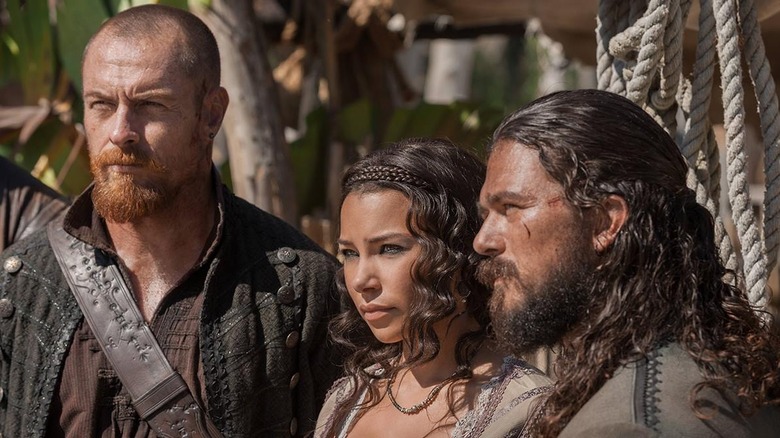
"Black Sails" offers up all the action and adventure that "Vikings" does, but substitutes Vikings with pirates on the high seas. Produced by action-movie maestro Michael Bay, the series is set in the world created by author Robert Louis Stevenson in his literary classic "Treasure Island," but takes place 20 years before the events of the book. It centers on Captain Flint (Toby Stephens) and his crew of buccaneers, who seek treasure and protect their home base of New Providence Island in what is now the Bahamas.
Asked how "Black Sails" compares to Disney's "Pirates of the Caribbean" movies, Stephens delivered a definitive response. "It is an epic TV series about piracy in the 18th century, the golden age, but it's character driven so it's very satisfying from that point of view," he told Digital Spy. "You get sucked into these characters you really enjoy ... They're complex, but at the same time you get all this amazing adventure stuff like battles, sequences when we're raiding ships and all that stuff." Stephens added, "For me, the texture of it is really good, it feels more like a really gritty western than your 'yo ho ho and a bottle of rum' stuff."
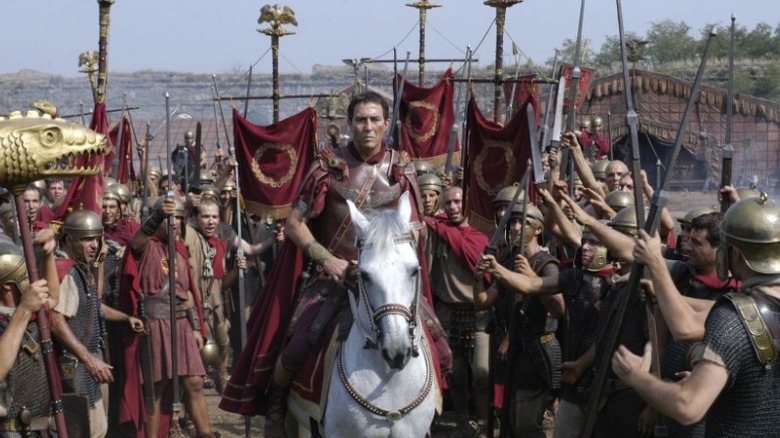
Making its debut in 2005, HBO's "Rome" was as lush and lavish a historical drama as one would expect from a show that was, at the time, the most expensive in television history, with the first season budgeted at $100 million. As a review in the New York Times put it, "Rome" offered viewers "the television equivalent of Cecil B. DeMille extravagance" in telling the story of two humble Roman soldiers (Ray Stevenson and Kevin McKidd) whose lives intersect with iconic historical figures (including Julis Caesar, played by Ciarán Hinds) during the historical events that transformed Rome from republic to empire.
While the show became popular with fans and received rave reviews, the high costs of making "Rome" proved to be its undoing. HBO pulled the plug after season 2 when its accountants apparently figured out there was no possible way for such an expensive show to turn a profit. However, as series creator Bruno Heller told Den of Geek, no series in history, before or since, managed to recreate that historical era with the same degree of historical detail. "Walking out there at dawn into the Forum and seeing this world created, it was just magical," Heller said. "It gives me goosebumps now thinking about it, seeing a hundred [Gaul] tribesmen on horseback with great furry helmets charging down a hillside yelling, that sort of thing. No one makes things like that anymore."

Loosely based on Stanley Kubrick's classic "Spartacus," which dramatized the tale of a slave-turned-gladiator who led his fellow slaves to revolt against their Roman masters, the Starz series "Spartacus: Blood and Sand" starred Andy Whitfield in the title role. As a review in The Guardian confirmed, the series became instantly renowned (or, depending on one's viewpoint, notorious) for its frequent and copious bloodshed. While reviewer Phelim O'Neill wasn't incorrect when he described "Spartacus" as "clearly the goriest thing ever on TV," he readily admitted that he "wasn't expecting what came next: 'Spartacus: Blood and Sand' is a terrific show — compelling, smart, intentionally funny."
After the first season, Whitfield was diagnosed with non-Hodgkins lymphoma; in order to give him time to deal with his illness, the show went on an extended hiatus while producers instead created a whole other show: "Spartacus: Gods of the Arena," a six-episode prequel that focused on the gladiatorial adventures of other characters. Sadly, Whitfield died at age 39 just 18 months after being diagnosed. After Whitfield's death, Liam McIntyre stepped into the lead part for the subsequent two seasons.
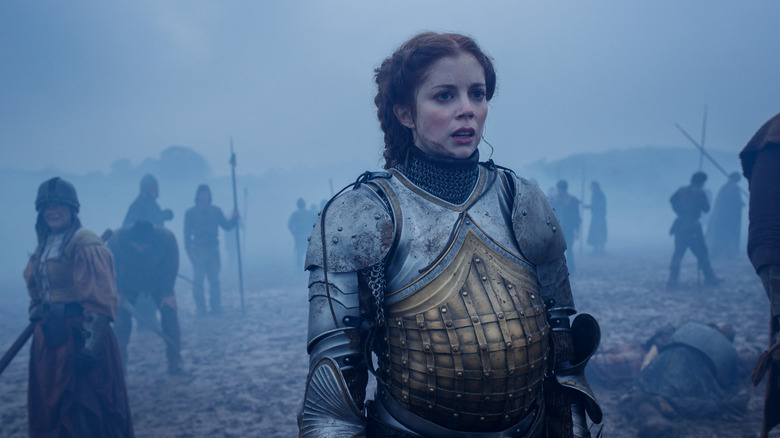
A follow-up to the earlier Starz series "The White Queen" and "The White Princess," "The Spanish Princess" presents a dramatic recreation of the life of Catherine of Aragon (played by Charlotte Hope), first wife of King Henry VIII. While Britain's Tudor era took place hundreds of years after the events of "Vikings," the themes of conquest and power are timeless, as seen here.
In order to present a rousing and exciting series that would attract the type of viewer who enjoys "Vikings" and similar dramas, "The Spanish Princess" took plenty of dramatic license when it came to historical accuracy. "This show is ultimately a fiction," Hope told Town & Country. "Catherine didn't go to war in armor, but she did give a really rousing speech. And I think that it was really important in our story for us to have the visualization of that power on the battlefield."
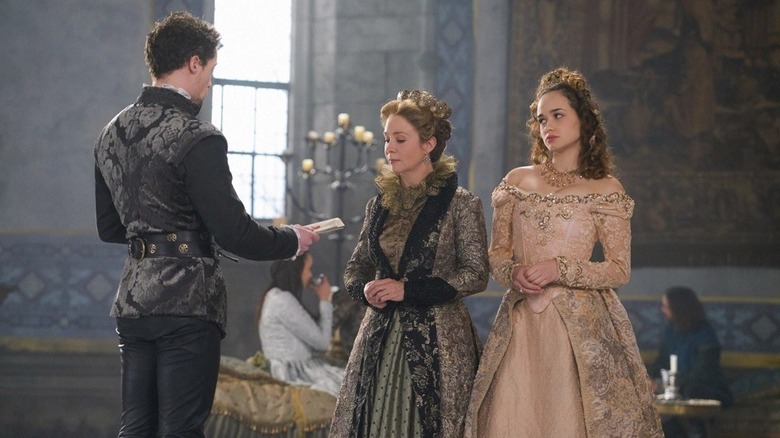
Tudor family history continued unfolding in The CW's "Reign." Premiering in 2013 and continuing for four seasons, "Reign" dramatized the formative years of Mary, Queen of Scots (Adelaide Kane) as she rose to power as queen of France following her wedding to Prince Francis. Megan Follows also starred in the series as Mary's scheming mother, Catherine de' Medici.
While "Reign" takes a far soapier approach to historical drama than "Vikings" does, it should appeal to fans of the genre. "The CW series does a fairly effortless-looking job of combining a 16th-century setting with a fluid, modern dynamic," The Wrap declared, while also listing several reasons why "Reign" is worth watching. "Those reasons include sumptuous production values, a fast pace, and a modern spin on the story of Mary, Queen of Scots," the review noted. However, it's the lead performance that really ties everything together. "The best reason to watch is Mary herself, played by star-in-the-making Adelaide Kane," The Wrap said.
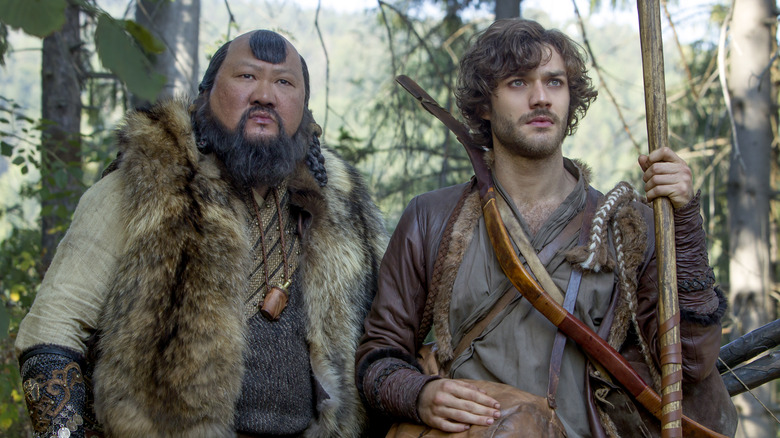
"Marco Polo" arrived on Netflix in 2014, following the adventures of the titular Venetian explorer (Lorenzo Richelmy), who finds himself enmeshed in the court of legendary Mongol leader Kublai Khan (the Marvel Cinematic Universe's own Benedict Wong). Kahn is attempting to go head-to-head with the Chinese army, placing Marco smack-dab in the midst of the conflict.
Ultimately, "Marco Polo" — which ran for just two seasons — had its pros and cons. On the positive side, notes The Review Geek's Greg Wheeler, are the show's "gorgeous cinematography and keen eye for visuals," which do much of the heavy lifting when it comes to transporting viewers to 13th-century Mongolia. On the flip side, a review in Vulture found "Marco Polo" to be "vacant and uninspiring," a sentiment echoed in Time's write-up, which described the show as a "gorgeous but ludicrous saga."
Given the series' massive budget (it reportedly cost about $90 million per season), no expense was spared in recreating those historic battles. "My best moment was when we were in the middle of this set with 300 extras fighting each other, and I was on my horse, riding as fast as I could down the valley, where I would shoot three arrows and enter into the war," Richelmy recalled in an interview with Collider.
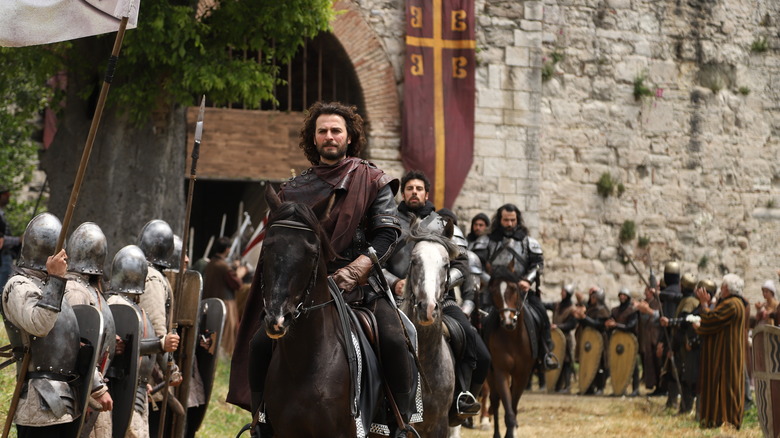
A Turkish production, "Rise of Empires: Ottoman" chronicles the saga of Sultan Mehmed (Cem Yiğit Üzümoğlu) as he leads his army on a mission to capture the Roman-occupied city of Constantinople, ultimately leading to the establishment of the Ottoman Empire. What makes the series stand out from other historical dramas is its depiction of warfare in the 15th century. The series takes viewers on a deep dive into the brilliant military strategies employed by the ruler who would come to be known as Mehmed the Conqueror.
While "Rise of Empires: Ottoman" may appear to be just another historical drama to the casual viewer, it's also part documentary, with historians chiming in to share their insights about the dramatic re-enactments. The show's secret weapon, however, is its narration; that comes courtesy of British actor Charles Dance, who's known to fans of "Game of Thrones" as the scheming Tywin Lannister.
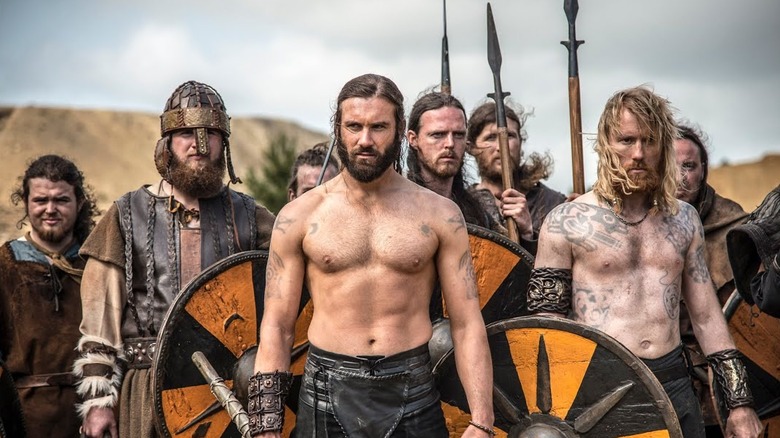
Conceived as a companion series to "Vikings," "Real Vikings" takes fans of the flagship series on a journey into the actual history behind the show, providing a healthy dose of context for the show's characterization of Ragnar Lothbrok and his exploits. Featuring commentary from top Viking historians and archeologists, the series combines documentary filmmaking with footage from the show. In addition, actors from the series, like Clive Standen, Maude Hirst, Alyssa Sutherland, and Katheryn Winnick, appear to help guide viewers through the surprisingly complex history behind their characters' quasi-fictionalized stories.
Given that the original "Vikings" has a tendency to play "fast and loose with recorded events," as The Guardian so succinctly put it, this informative and fascinating addendum offers fans the opportunity to become better versed in real Viking history and lore, which definitely results in a deeper appreciation of the main show.
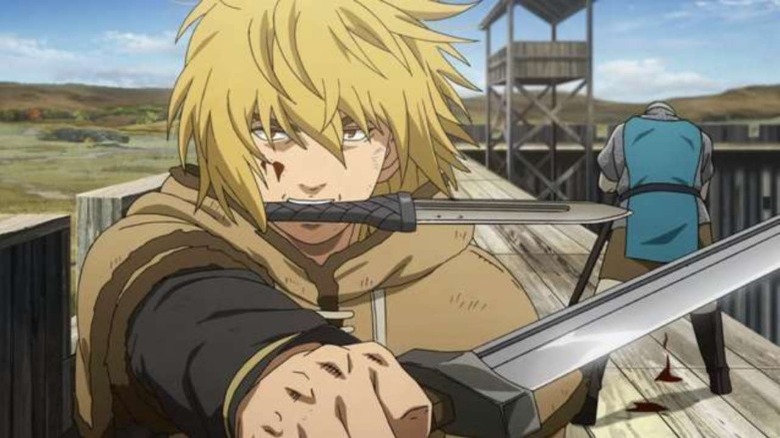
"Vikings" viewers who are partial to animation are in for a treat. Based on a Japanese manga, "Vinland Saga" follows the journey of a boy named Thorfinn. When his beloved father is murdered by a vicious mercenary named Askeladd, Thorfinn joins Askeladd's crew — without revealing his true identity, of course — in order to take out his father's killer and get some revenge. However, the plot takes a number of unexpected twists and turns, and winds up being much more than just another revenge story.
According to CBR's review, "Vinland Saga" is "a must-watch anime series" that will undoubtedly appeal to fans of "Vikings." In fact, Polygon goes a step further by describing the anime series as "a violent and bloody good time with exquisite action scenes, fleshed-out characters and an intriguing story about coming of age in a cruel world that takes enough from real life to satisfy history buffs."
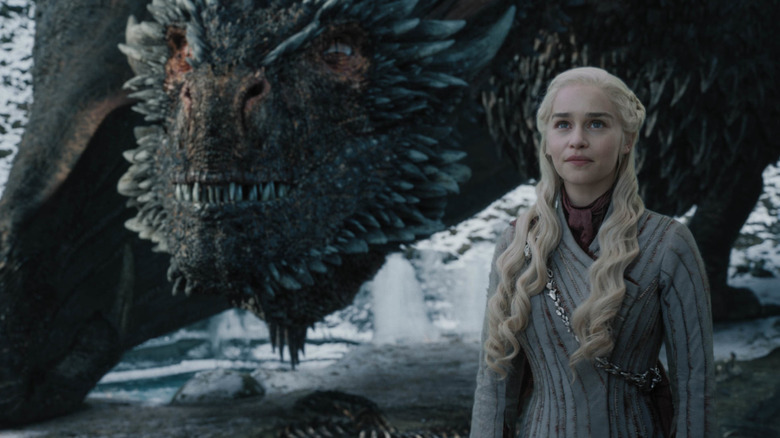
Over the course of its run, "Vikings" was continually compared to "Game of Thrones" — an understandable connection, since they were both on the air at the same time. Obviously, there are some key differences between the two shows. The biggest and most obvious is that, while "Vikings" is a scripted drama, it's rooted in actual Nordic history. "Game of Thrones," meanwhile, is set in a make-believe world created by author George R.R. Martin that features fire-breathing dragons, ice zombies, and other fantasy elements.
While it was inevitable that the two shows would go head-to-heda in the media, "Vikings" star Clive Standen felt that it was "a bit unfair" to compare them. "['Game of Thrones'] all comes from the imagination of one man's mind. Whereas 'Vikings' is a historical drama," Standen told Fox News. "It's documented in history. It's a very, very broad spectrum of history. But ... these are all real characters that lived and breathed and walked the earth. They're all worthy of the history books."
Read this next: Shows Like Game Of Thrones You Definitely Need To See
The post 15 Shows Like Vikings That You Really Need to See appeared first on /Film.
 VirtualBox v7.0.4 is released. VirtualBox is a general-purpose full virtualizer for x86/x64 hardware. Targeted at server, desktop and embedded use, it is now the only professional-quality virtualization solution that is also Open Source Software....More
VirtualBox v7.0.4 is released. VirtualBox is a general-purpose full virtualizer for x86/x64 hardware. Targeted at server, desktop and embedded use, it is now the only professional-quality virtualization solution that is also Open Source Software....More
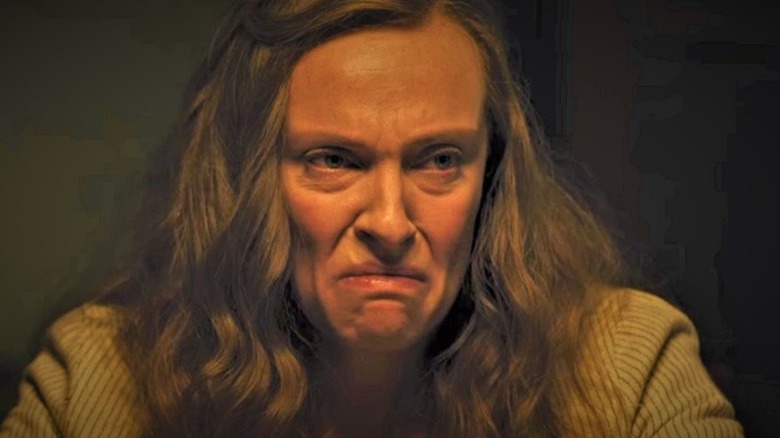
Everyone remembers the old Stouffer's commercials. A nice American family sits down for some kind of baked casserole or microwaved TV dinner while a soft guitar thrums in the background, urging them to reprioritize family time. In truth, it's not an especially bad sentiment. Interpersonally speaking, the dinner table is as good an opportunity as ever to connect to the people one loves most, sharing notes on respective days — the good, the bad, and everything in between.
As an opportunity to unwind and connect, it's priceless, though if horror movies have taught audiences anything, it's that the dinner table can be one of the scariest places to be. It's par for the course, with scary movies frequently exploiting quotidian fears to terrifying, remarkable success. The dinner table is perhaps one of the scariest, however, largely because it's so intimate. At the table, guards are down and closeness is elevated. It's a window into the unvarnished souls of those there, and here we'll be looking at the 10 most terrifying dinner scenes in horror movies.
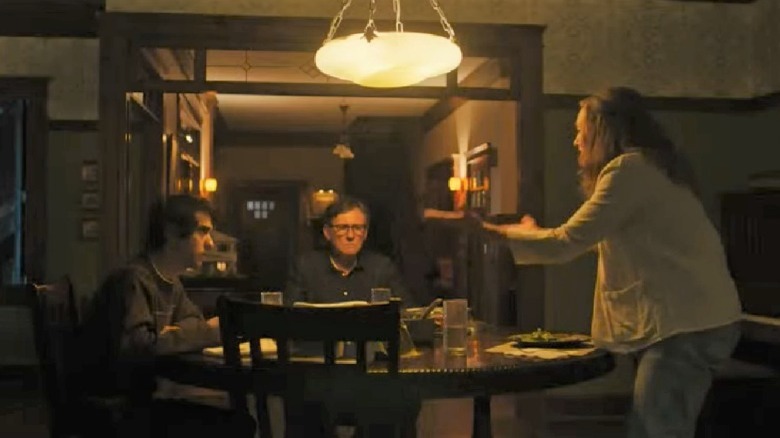
Ari Aster's "Hereditary" is undoubtedly one of the scariest movies of the century, if not of all time. While Aster is at maestro-level in his feature debut, it's truly Toni Collette's gut-wrenching, bereaved, terrifyingly unhinged performance that elevates "Hereditary" above its haunted house ilk. Collette is so good here — truthfully, unequivocally — that she doesn't just deserve mention among the greats of horror, but the cinematic greats period. It's a transcendent, bone-chilling performance.
Collette's best moment comes in the perennially memed second act dinner. As Collette's Annie sits down to dinner with her husband (Gabriel Byrne) and son, Peter (Alex Wolff), the tension between her and Peter is sever-a-head-with-a-telephone-pole palpable. As they argue, both grappling with grief in their own way, Collette explodes, accosting Peter for his selfishness while blaming him for the death of her youngest daughter, Charlie (Milly Shapiro). It's a tour-de-force, sure, but it's also the movie's scariest moment. In a film abounding with sinister cults and sundry beheadings, that's saying something.
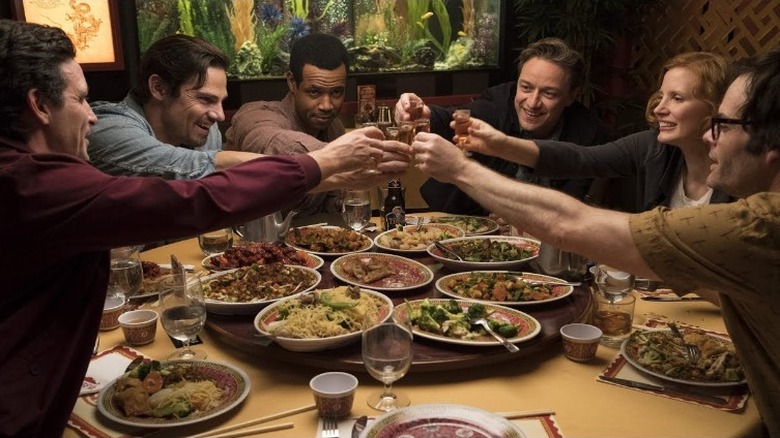
The climactic, terrifying dinner at Jade of the Orient is featured in Stephen King's seminal novel, "It" and both on-screen adaptations — Andy Muschietti's two-part theatrical release and Tommy Lee Wallace's made-for-television adaptation. In both filmed versions, Jade of the Orient is firmly "Part 2" territory, arriving in the second half where the now-grown Losers reunite for the first time since their terrifying, adolescent run-in with Pennywise the Dancing Clown.
Among the versions, Muschietti's is the most chaotically and comically frightening, taking full advantage of a bigger budget and a suite of known faces to truly sell the terror. Fortunes spell doom, cookies come to life as monstrous, baby-faced insects, and black goo oozes from the center of the table. The Losers overcome eventually, reminding themselves that none of it is real. Yet, it's an augur of what's to come now that the adult Losers have returned to Derry, and it's deliciously, wickedly effective.
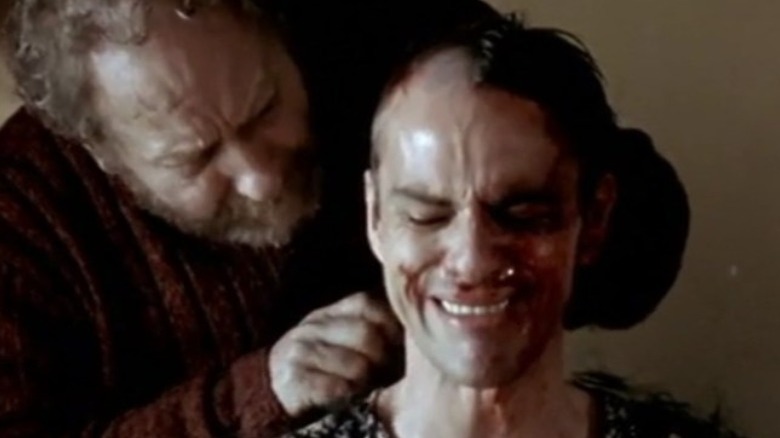
Fabrice du Welz's "Calvaire" isn't for the faint of heart. Recently re-released with an HD remaster at the 2022 Brooklyn Horror Film Festival, Welz's nihilistic, brutal masterpiece is finally getting some of the credit it deserves. An early progenitor of the New French Extremity movement, this Belgian production follows a young musician, Marc (Laurent Lucas) after he is stranded in a wayside, rural Belgian town. He's taken in by Jackie Berroyer's Mr. Bartel, an innkeeper with sinister intentions.
I won't spoil those intentions here, though be warned, "Calvaire" goes to some dark places. Its handling of sensitive, especially queer, elements might be polarizing, though there's no denying how thoroughly "Calvaire" basks in the frightening futility of modern life. Late in the film, right before all hell breaks loose, Mr. Bartel sits down with a battered Marc for Christmas dinner. What follows is heartbreaking and shocking, a kind of Belgian "Straw Dogs" with a twist. Seek this one out immediately, but maybe finish your own dinner first.
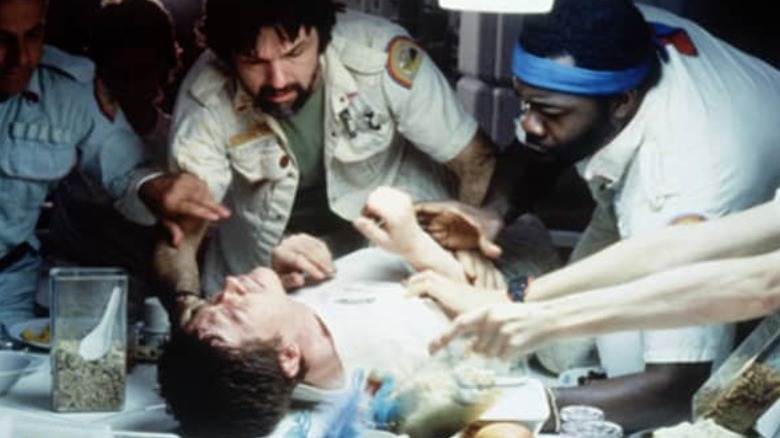
There's no doubt "Alien" has arguably the most famous dinner scene in horror history. Alongside Alfred Hitchcock's "Psycho" shower scene, it's a seminal, iconographic bit of horror history, one so unexpected and gruesome, it has all but seared itself into the minds of audiences old and new. With glorious practical effects work and enviable performances of lived-in terror from its cast, it's what made "Alien," well, "Alien," reminding audiences that in space, no one can hear them scream.
The crew of the Nostromo sits down for dinner just as the late John Hurt's Kane awakens from a comatose state, having previously been unconscious with an alien being tied around his face, its tail down his throat. When it freely detaches itself, everyone presumes he's fine. That is, of course, until the titular alien bursts forth from his chest, splattering everyone with blood, before fleeing into the ducts. Kane is immediately killed as the alien creatures bursts through him with ease, and at that moment, "Alien" made horror history.
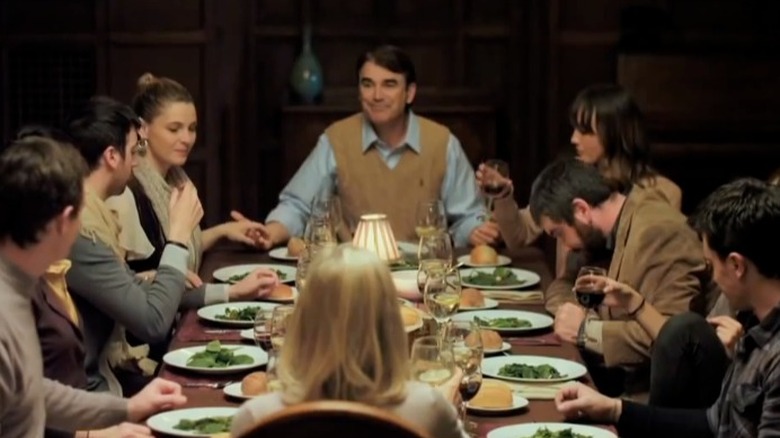
Adam Wingard's "You're Next" turned not just the slasher subgenre on its head, but the entire horror world with its twisted, clever subversion of conventional horror tropes. Chief among them is the background of the final girl, Erin (Sharni Vinson), girlfriend to A.J. Bowen's Crispian. Accompanying Crispian to his family's wooded, rural manor for his parents' anniversary dinner, no one knows that Erin grew up on a survivalist compound and is better prepared for a forthcoming masked siege than most.
As the family sits down for dinner — a cast that includes the likes of Barbara Crampton and Joe Swanberg — Wingard lets the black humor fly, having the various members argue over petty grievances, careers, and whether mom and dad love them the most. That is, of course, until none other than horror royalty Ti West's Tariq is impaled in the head with a crossbow bolt. The family scatters as more bolts shatter the windows. From there, "You're Next" never lets up, and both tonally and thematically, the dinner best conceptualizes just how subversive a slasher the movie intends to be.
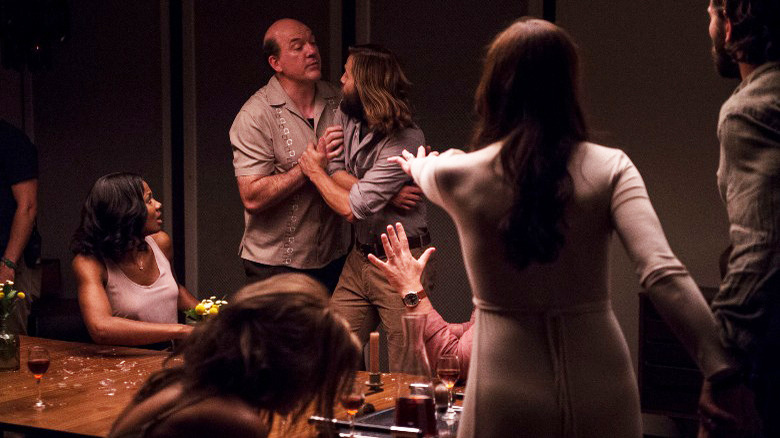
While Karyn Kusama still hasn't received the credit she deserves for "Jennifer's Body," one of this century's most wickedly effective teen horror films, she at least has gotten appropriate kudos for "The Invitation," one of the most effective horror releases ever. Here, Logan Marshall-Green's Will attends a dinner party with friends at his ex-wife Eden's (Tammy Blanchard, channeling Liv Tyler) home. The two split after the death of their son, and in the time since, Eden has been up to some cultish activity, joining the titular invitation, a grief support group with sinister intentions.
"The Invitation" is unbearably, aggressively slow burn in the best way. While it's clear from genre conventions that something terrible is poised to happen, Kusama takes her time getting there, though when it does, plenty of blood is spilled over one of the most terrifying group dinners in cinematic memory. It's the perfect release of aggregate tension, and with it, Kusama achieved cult status.
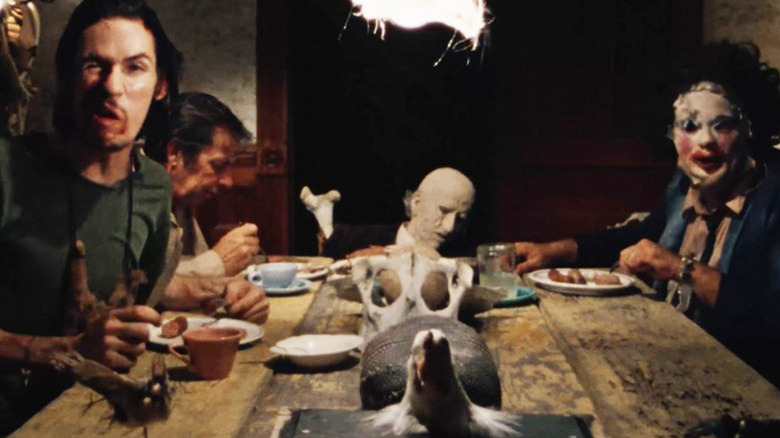
It's worth noting that Tobe Hooper's "The Texas Chain Saw Massacre" isn't nearly as violent as its legacy might suggest. Famously, Hooper even intended for the movie to be rated PG, reportedly being surprised by its R rating. Yet, where "The Texas Chain Saw Massacre" might seem tame by the standards set by the contemporary horror canon, there is one sequence so frighteningly grimy and horrific, it might as well have dashed any hopes Hooper had for a PG rating.
After Sally Hardesty's (Marilyn Burns) friends are killed by Leatherface (Gunnar Hansen), she is captured and forced to endure the daily dinner ritual of the deranged, homicidal family. Her finger is cut, she's seated across from a corpse, and the scene is adorned with macabre set pieces, including a lamp whose shade is stitched together with human skin. While Sally successfully escapes the following morning, it's undoubtedly the most disturbing beat in "The Texas Chain Saw Massacre." Terrifying, chaotic, and unlike anything seen at the time — and frankly, since — it's a core component of what renders "The Texas Chain Saw Massacre" one of the scariest movies ever made.
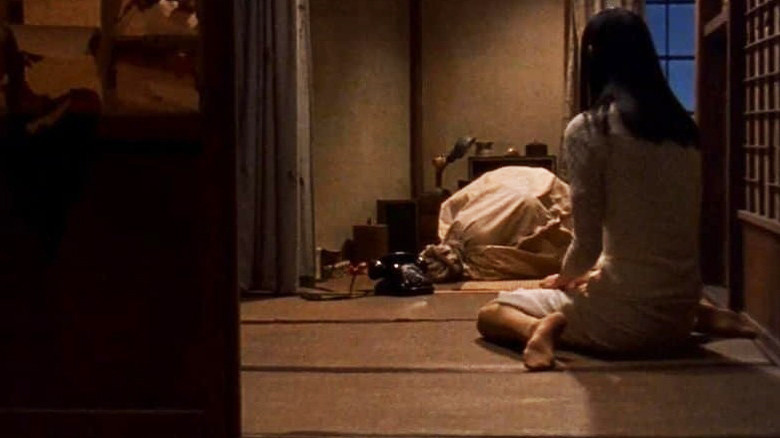
Karyn Kusama's "The Invitation" is positively propulsive compared to Takashi Miike's classic "Audition." Released in 1999 and adapted from Ryu Murakami's novel of the same name, "Audition" stars Ryo Ishibashi as Shigeharu Aoyama, a widower who is compelled to stage phony film auditions by a friend, the hope being that Aoyama might finally meet a woman to get his mind off his grief. And meet a woman he does. When Asami (Eihi Shiina) enters, he is infatuated from the start.
The two begin to date, and for most of the runtime, "Audition" plays like something akin to a stilted, yet engaging, low-key romance. Yet, as "Audition" progresses, the romance is interspersed with brief, terrifying vignettes of blood bags and mutilated bodies. Soon, "Audition" arrives at its terrifying dinner scene.
Asami is not well, spending her days drugging and torturing the men she meets. In a flashback, audiences are introduced to Asami's past. A man missing both feet, his tongue, and several other body parts crawls toward Asami, begging for food. She throws up into a dog bowl and places it there for him to eat, and eat he does, devouring it with disgusting, terrifying fervor. Curiously, it might arguably not even be the movie's scariest scene, a testament to just how accomplished Miike's classic really is.
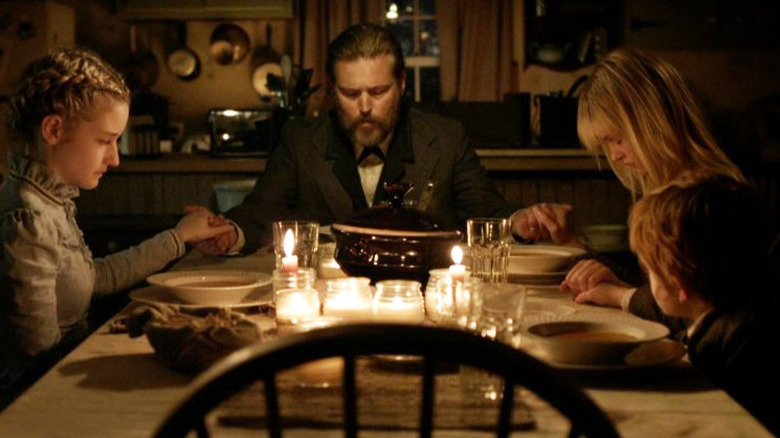
Jim Mickle's "We Are What We Are" is one of this century's most underrated horror movies. A remake of the Spanish-language "Somos lo que hay," Mickle's adaptation is the rare horror movie that improves considerably on its source material. Make no mistake, "Somos lo que hay" is remarkably accomplished, but "We Are What We Are" packs its own frightening, cannibalistic bite.
Ambyr Childers and Julia Garner star as Iris and Rose respectively, the two daughters of the reclusive Parker family. After their mother and matriarch of the clan passes away, the two daughters are unsure of their newfound role in the family, namely the responsibility of taking over what their mother did. And soon thereafter, it becomes very clear that the Parkers are cannibals. Within the first act, Iris and Rose are forced to not only kill a young woman being held captive but then carve her up and prepare her for dinner. It's a stripped-down, almost indifferent depiction of ritualistic cannibalism, and it's a key contributor to what makes "We Are What We Are" not only so distinct, but also so terrifying.
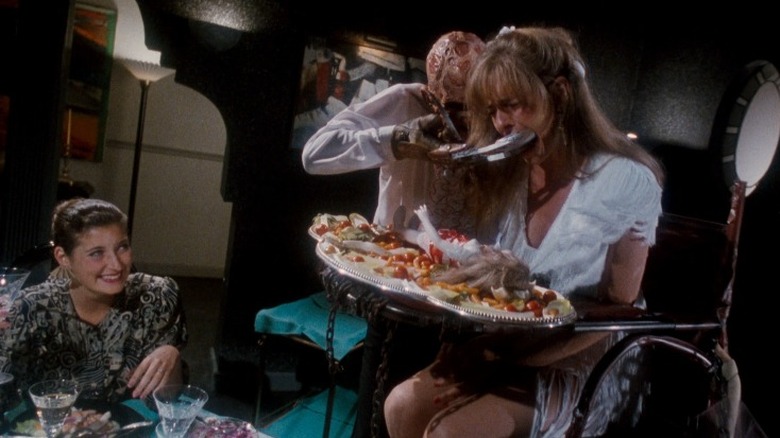
While Wes Craven's original "A Nightmare on Elm Street" was plenty playful, it was first and foremost a horror movie. Robert Englund's original iteration of the infamous Freddy Krueger was a genuinely frightening boogeyman who never pulled his punches. As the series developed, especially in the Craven-scripted "A Nightmare on Elm Street 3: Dream Warriors," Krueger shifted away from his horror roots, becoming more playful, with the respective filmmakers for subsequent entries prioritizing high-concept, ludicrous deaths — often played for laughs — over genuine tension or any consistent approach to scares. It notably distinguishes the franchise from other slasher series, and by the time Stephen Hopkins' "A Nightmare on Elm Street 5: The Dream Child" arrived, the series was firmly in cheeky camp territory.
One of the entry's standout deaths is that of Greta (Erika Anderson), an aspiring supermodel who frequently watches what she eats. At a dinner party with her parents, Greta falls asleep, and in the dreamscape, Freddy assails her. He binds Greta to a twisted high chair while feeding her own organs to her. The practical effects are stellar as Greta's cheeks swell, stuffed to the brim with more and more noxious food. As Greta chokes, her parents in the waking world watch on in horror until she collapses dead on the table. While the later "Nightmare" entries might not be especially scary, there's no denying the sheer creativity on display. Greta's dinner death remains one of the best.
Read this next: Horror Roles That Changed Actors Forever
The post The 10 Most Terrifying Dinner Scenes in Horror Movies appeared first on /Film.
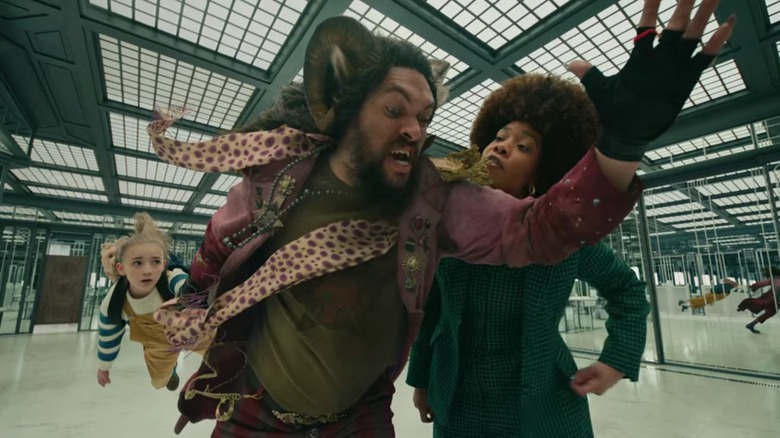
Netflix's latest original movie just dropped, and it's a family-friendly fantasy romp featuring Jason Momoa in horns and fangs, a bearded lighthouse keeper played by Kyle Chandler, and a whole host of fantastical elements that could only exist in a dream world. That is, after all, what "Slumberland" is about. The story follows Nemo (Marlow Barkley), a girl who disappears into the titular dream world in hopes of finding her dad (Chandler), who passed away.
Francis Lawrence's film is a riff on the famous "Little Nemo in Slumberland" comic strip by Winsor McCay, which appeared in newspapers in the early 1900s. One of the film's cast members, though, takes inspiration not just from the source material, but from a legendary on-screen icon of decades past. "I May Destroy You" star Weruche Opia plays Agent Green, a member of the Bureau of Subconscious Activity who attempts to stop Nemo as she travels through the dream world. Rather than draw from the police procedurals of the current era, Opia looked to classic Black excellence.
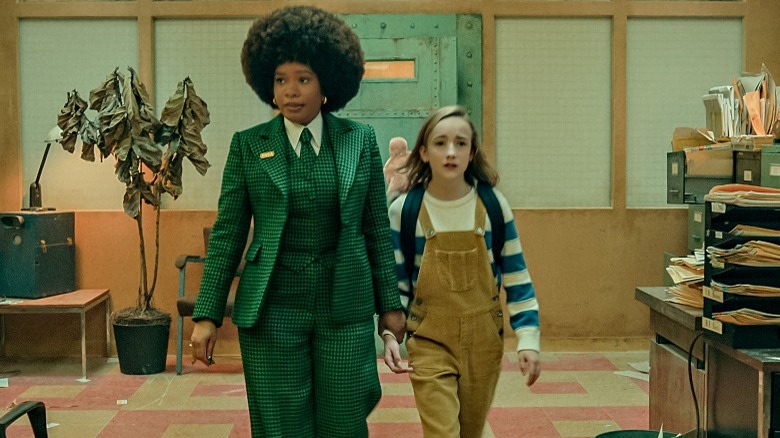
Weruche Opia spoke with /Film alongside co-star Chris O'Dowd in time for the film's release, and the actress revealed her inspirations for the Afro-sporting, smart suit-wearing character of Agent Green. "That character is inspired by Pam Grier and a dash of Denzel Washington in there, but mostly Pam Grier," Opia shared, adding that she "absolutely loved" the '70s style look she got to rock for the role. The "Coffy" and "Foxy Brown" actor is one of the most powerful and recognizable '70s action stars, and Opia apparently channeled her vibe on set.
"I was walking in that kind of energy, I was singing constantly," Opia adds, before revealing the tune that kept her in character. "I don't know what the song's called, but [sings] 'Won't you take me to Funky Town?' That was my inner song all the time." Lipps Inc's "Funkytown" is a great song to get stuck in your head on any given day, but it seems especially relevant in her role, given that the Bureau of Subconscious Activity on the whole has a '70s aesthetic.
"I think that just gave her a little pep in her step," Opia says of her character. Agent Green is nearing retirement in "Slumberland," but her plans keep getting thwarted by Nemo's chaotic and zany dream guide, Flip (Jason Momoa). "I think [the Bureau of Subconscious Activity] are boring buzzkills, but she has her own flair on how she handles stuff," Opia says of Agent Green. So where does the Denzel part of her character fit in? She didn't mention that, so I guess we'll have to find out for ourselves.
"Slumberland" is now on Netflix.
Read this next: The 25 Best Kids' Movies Of All Time
The post Slumberland's Agent Green Was Inspired By Pam Grier 'And A Dash Of Denzel Washington' [Exclusive] appeared first on /Film.

After much anticipation, we’re proud to be announcing the general availability of VMware Workstation 17 Pro and Player!
Let’s take a quick look at what’s new!
Support for Windows 11 Hosts and Guests – Create Windows 11 VMs on Linux and Windows 11 hosts. To provide this support, we delivered an mproved Virtual Trusted Platform Module and new ‘fast’ VM Encryption type.
Along with VM ‘Full Encryption’, we are introducing a ‘Fast Encryption’ capability to deliver maximum performance for VMs that use a vTPM.
This new feature allows you to configure Virtual Machines to start automatically when your PC boots.
To deliver a Windows 11 supported TPM, VM encryption features have been extended to Workstation Player product to seamlessly create Windows 11 virtual machines
In addition to Windows 11, we’ve added support for a plethora of new Guest Operating Systems with this release, including:

Download the Trial by visiting: vmware.com/go/tryworkstation
Ready to buy? Head over to the VMware Online Store where we’re running a 30% off new licenses launch sale!
The post Announcing VMware Workstation 17 Pro and Player appeared first on VMware Workstation Zealot.
Read more of this story at Slashdot.